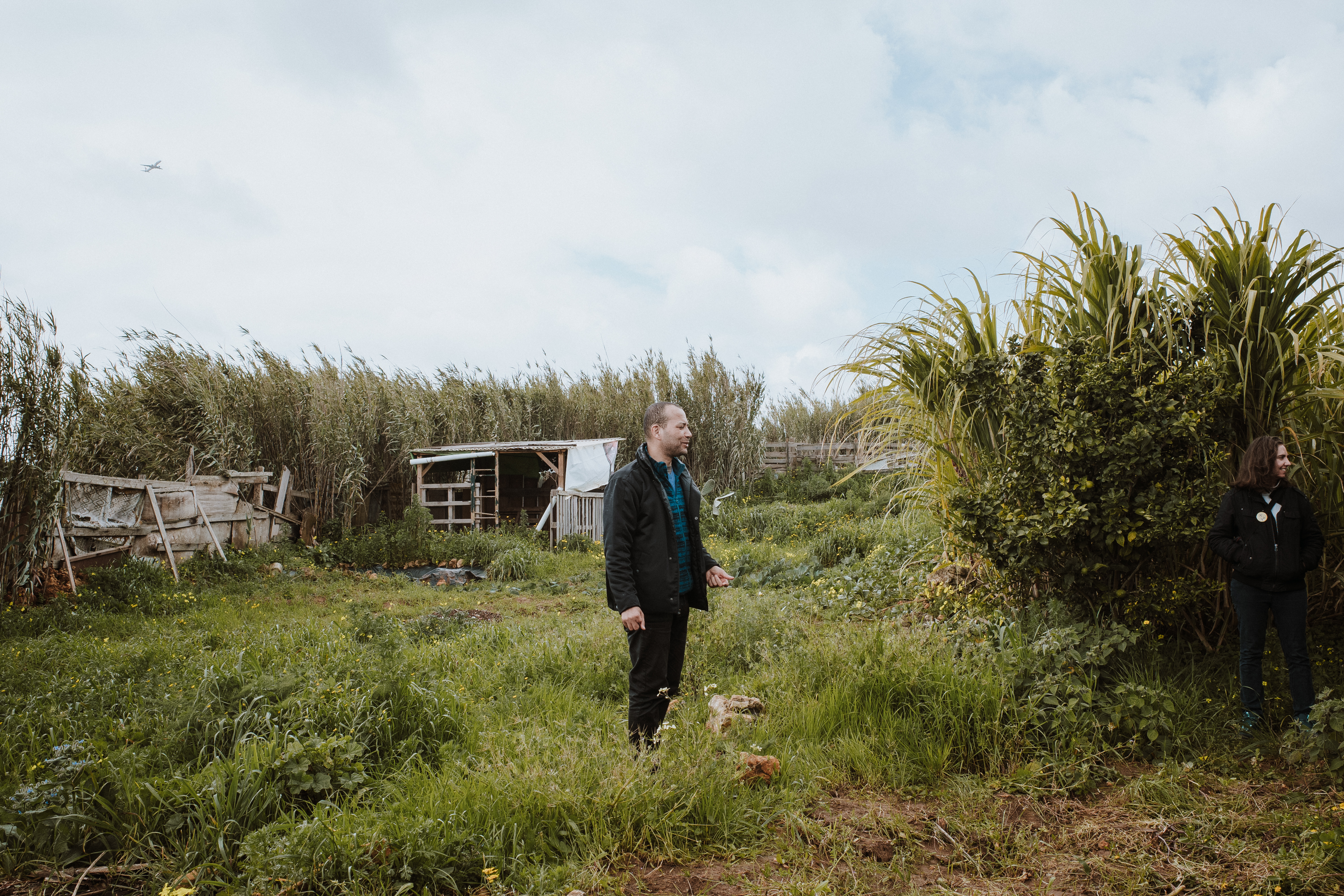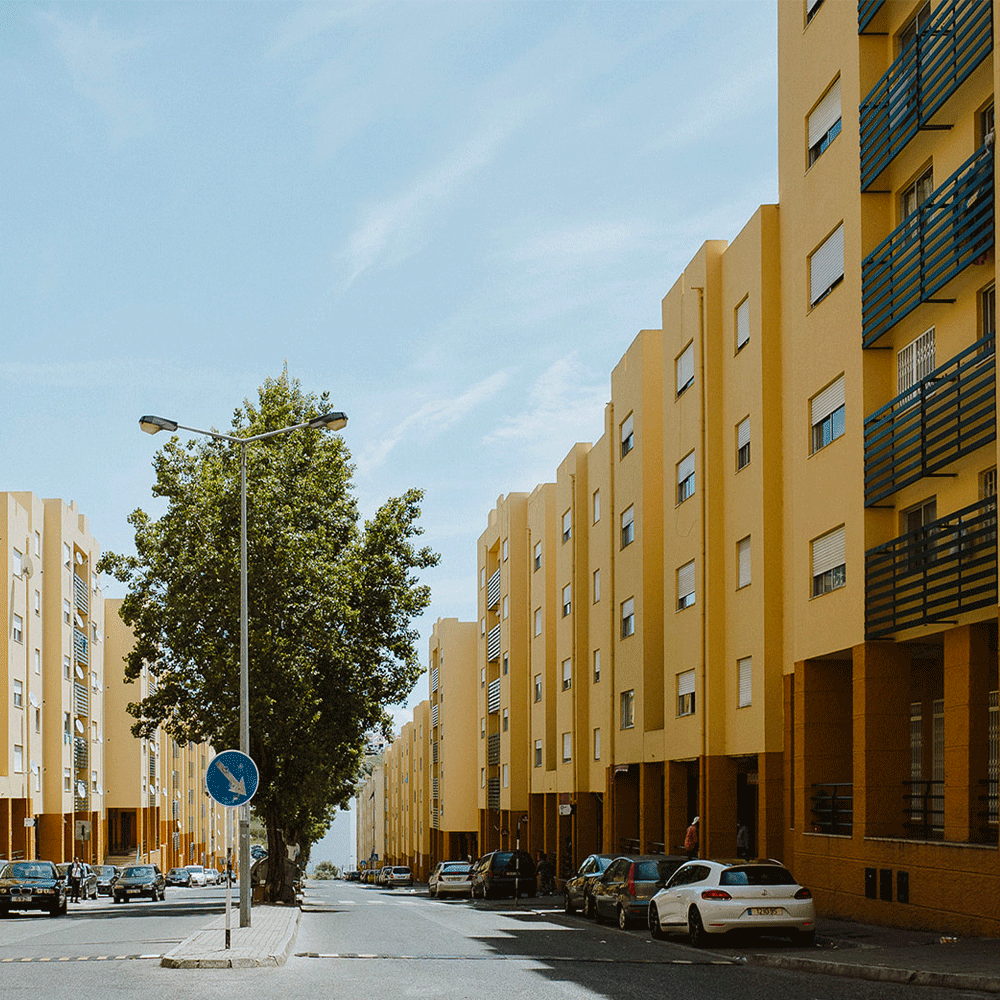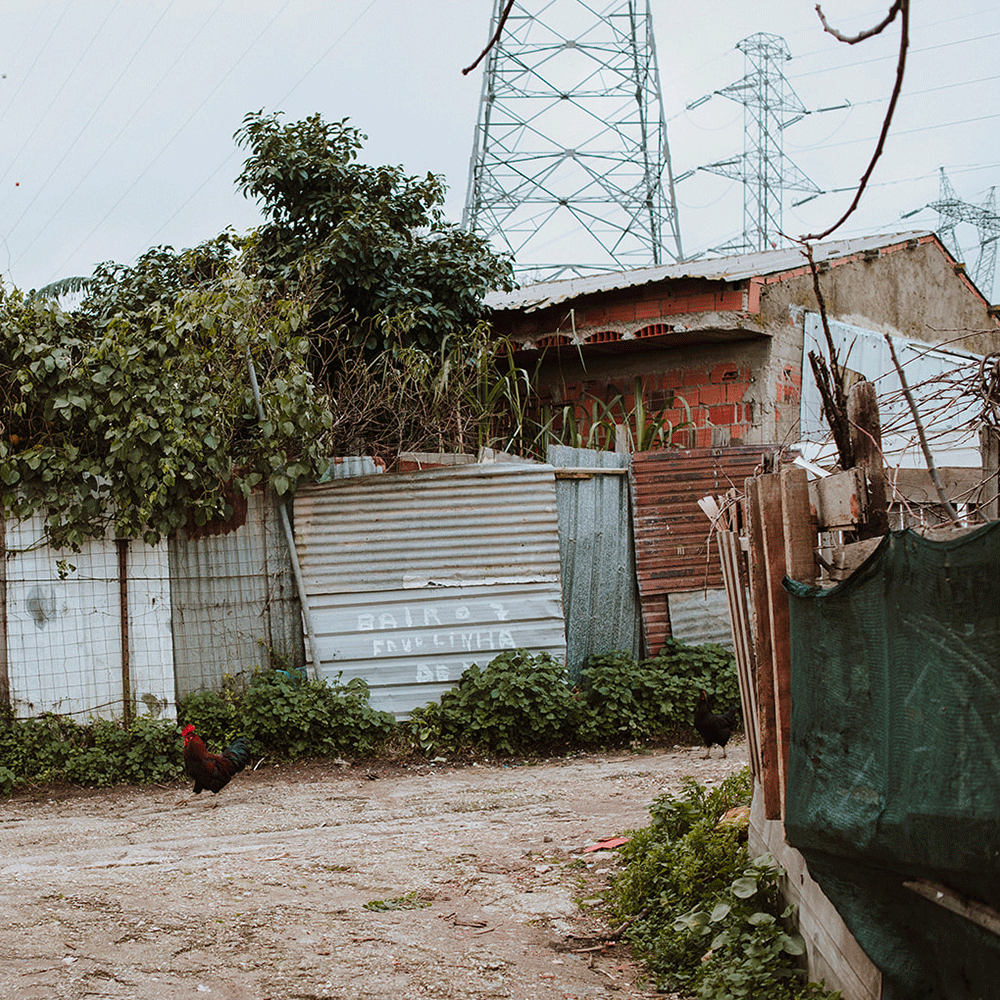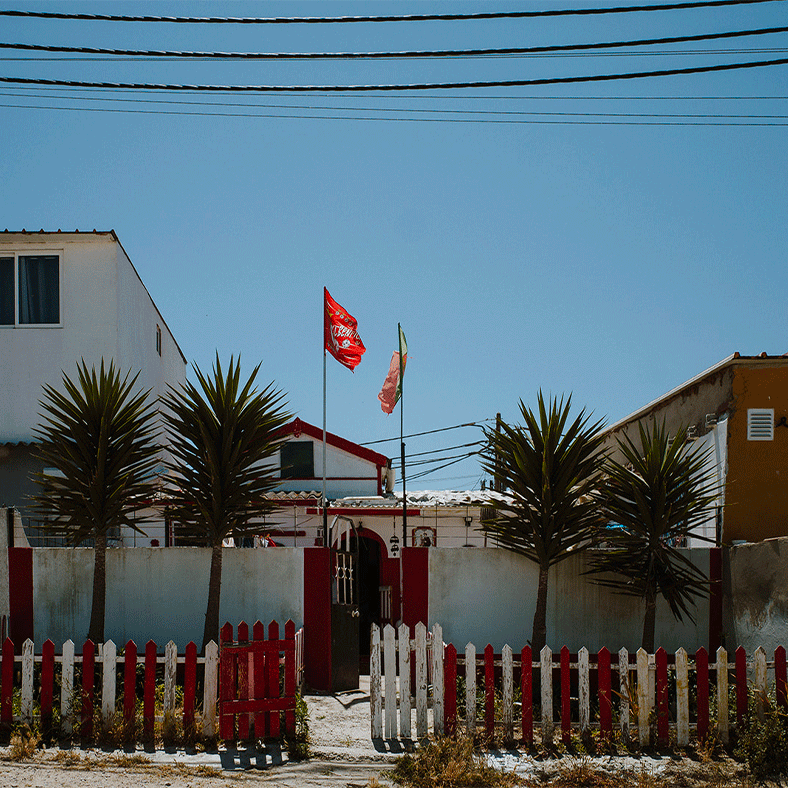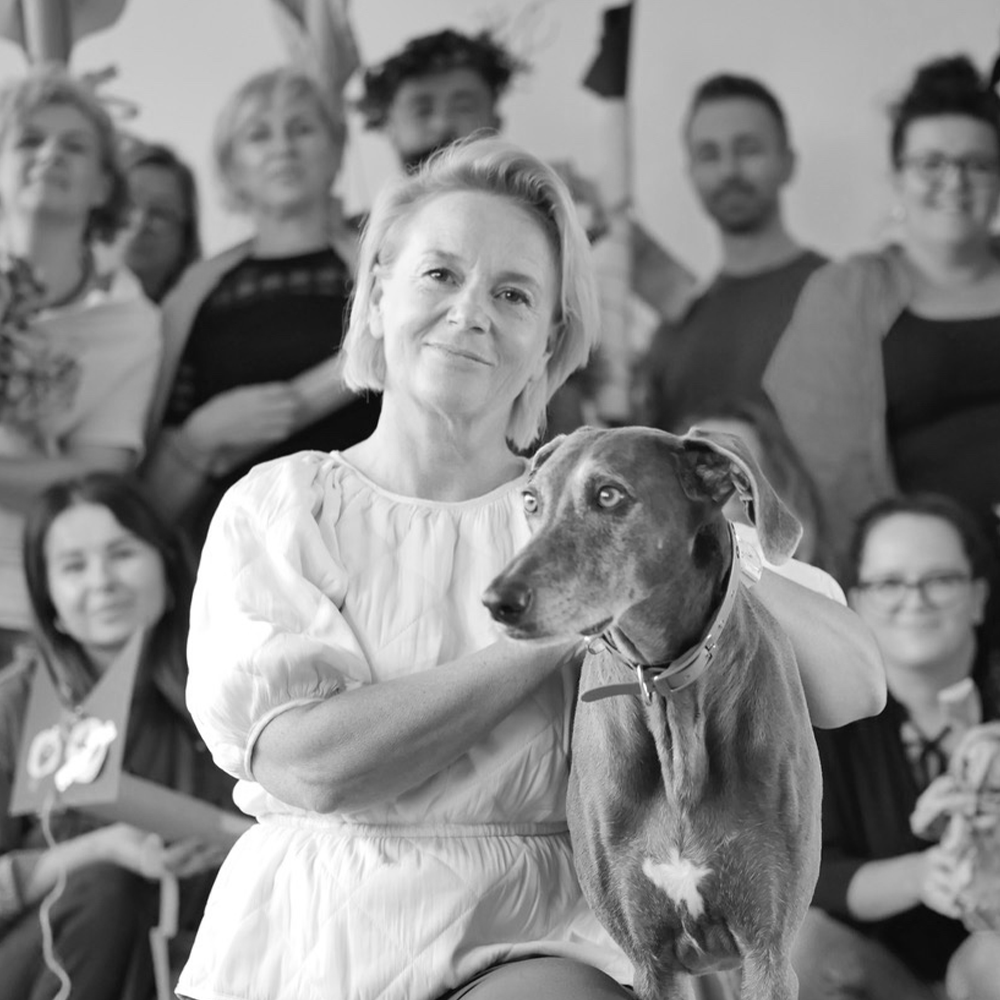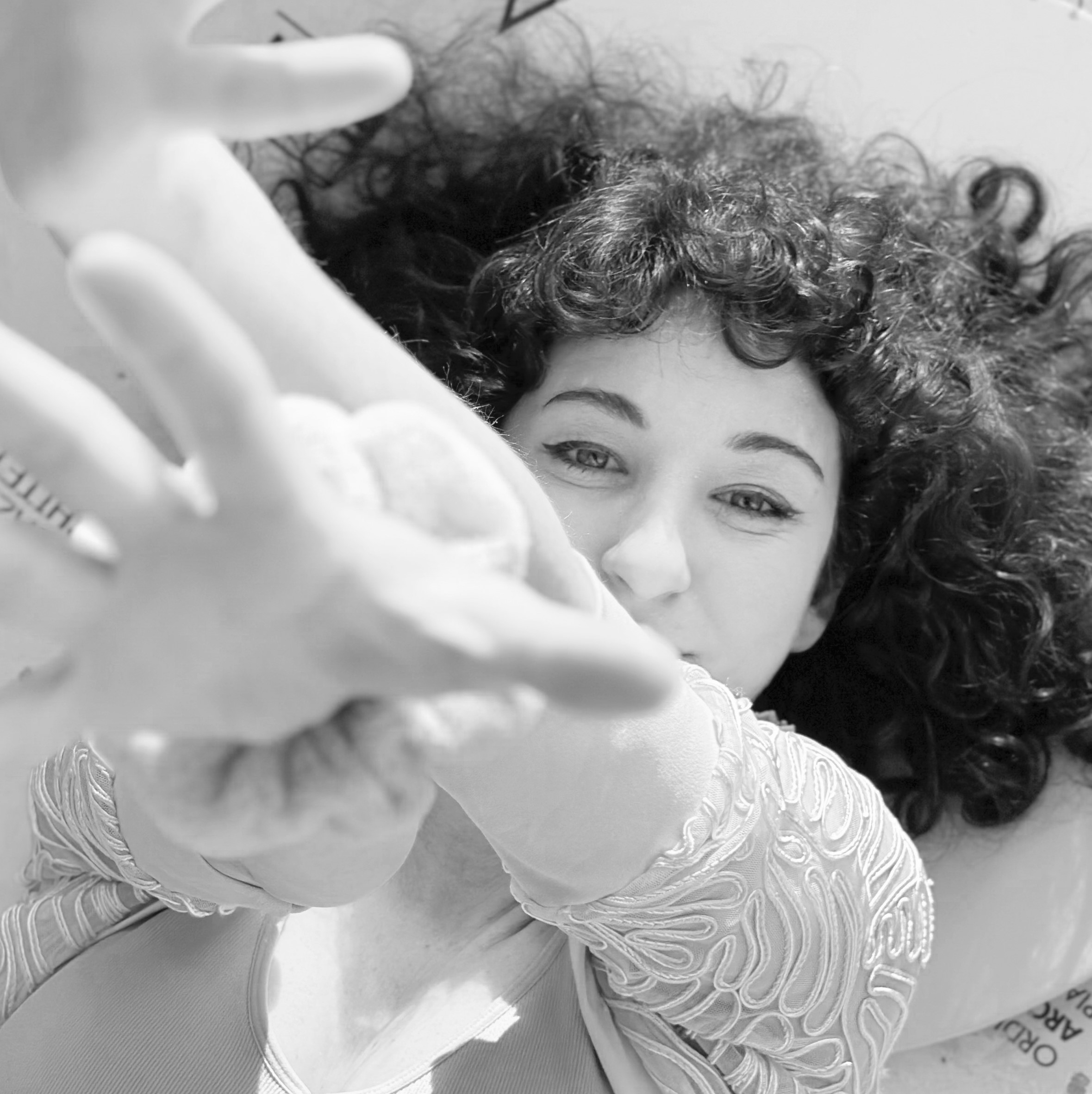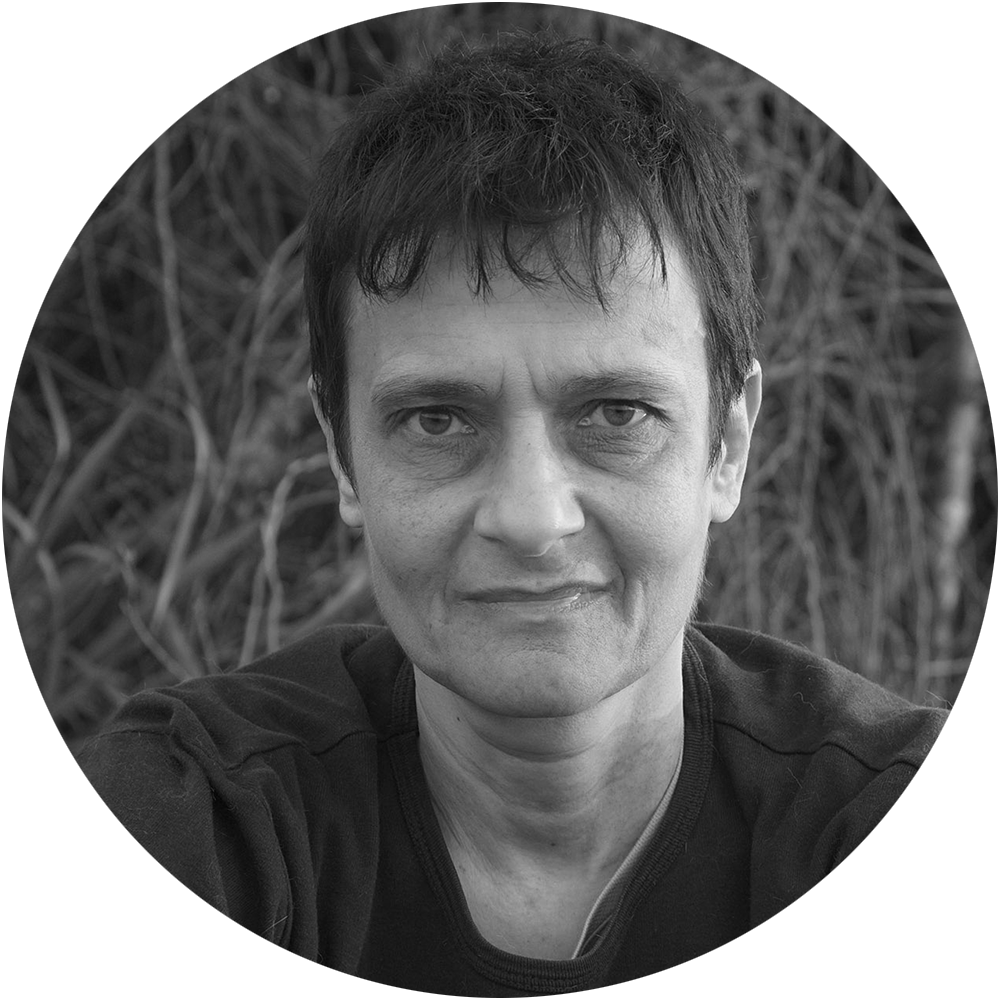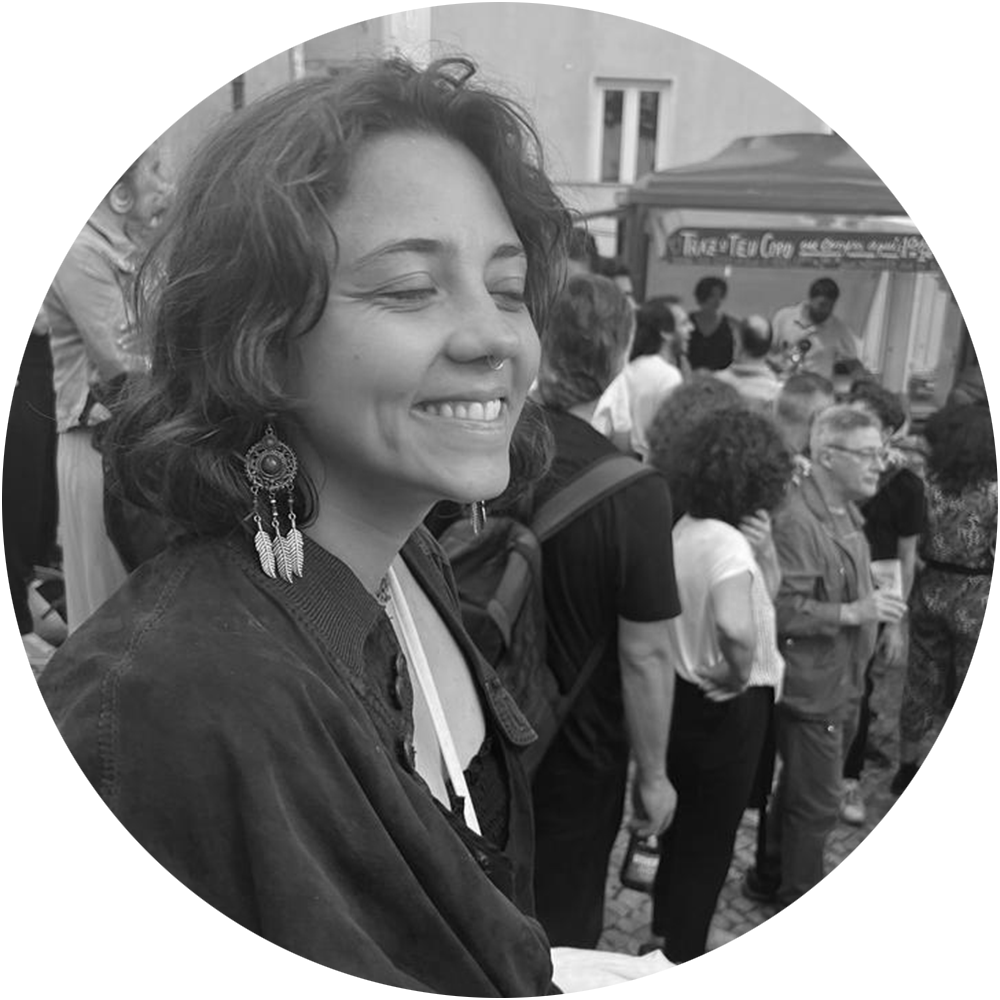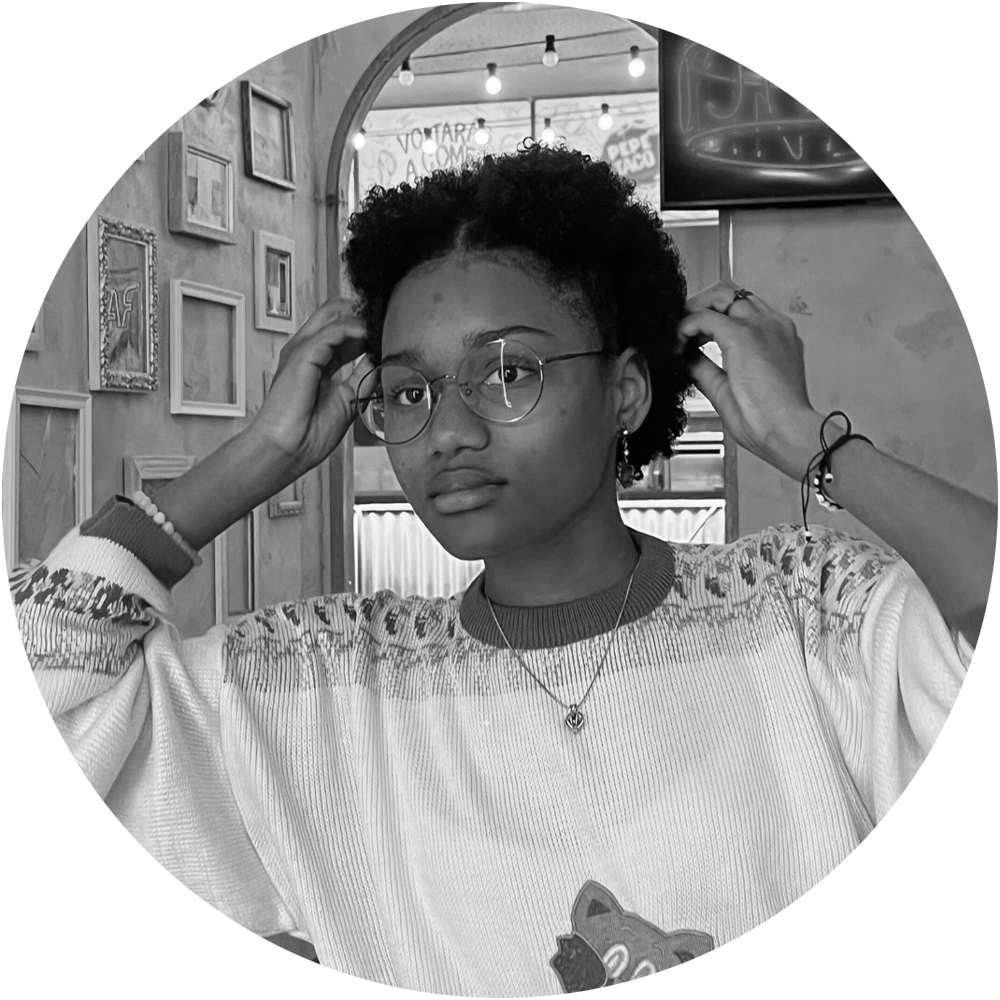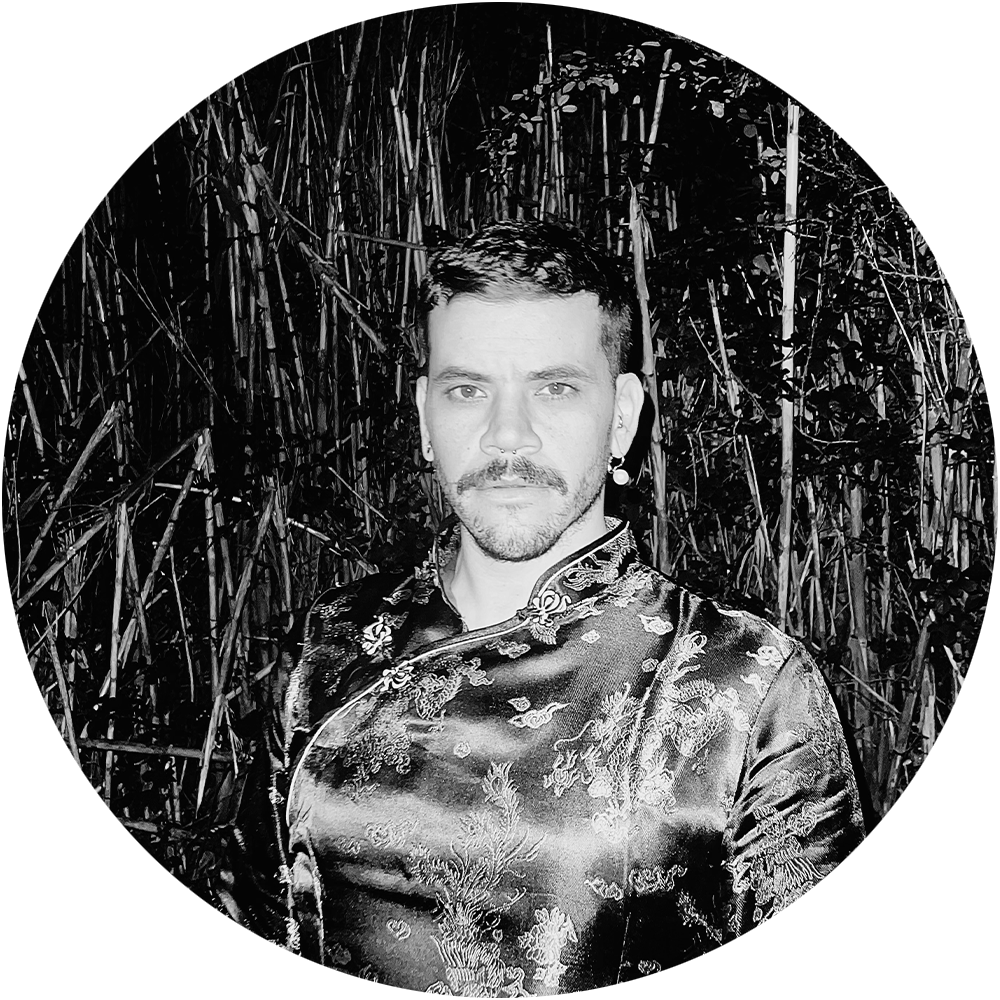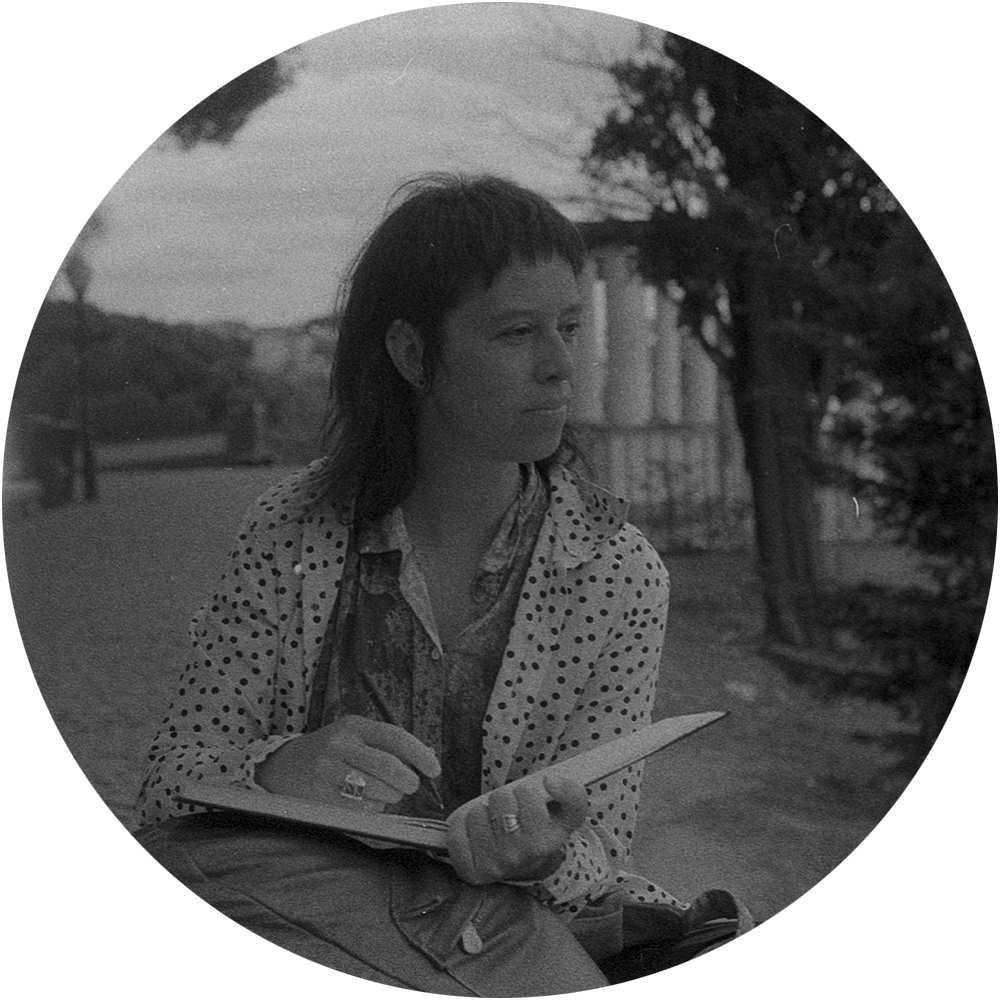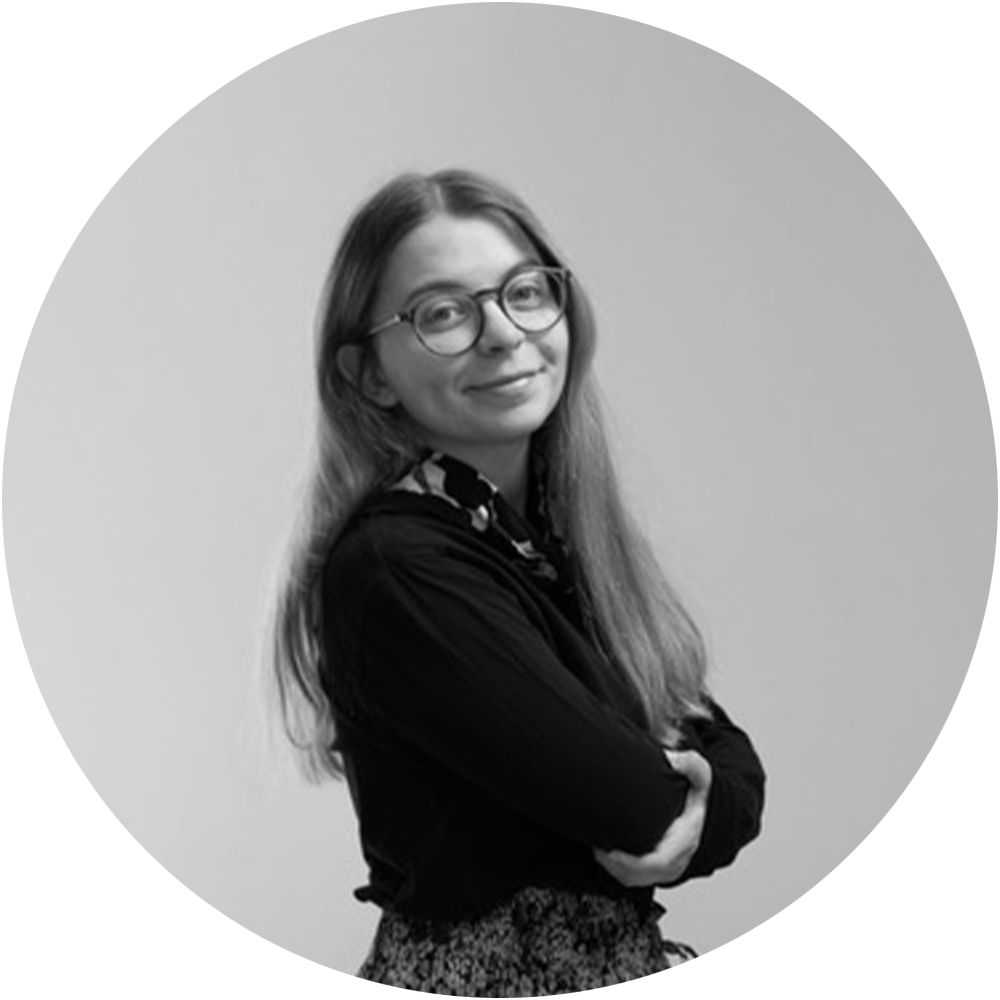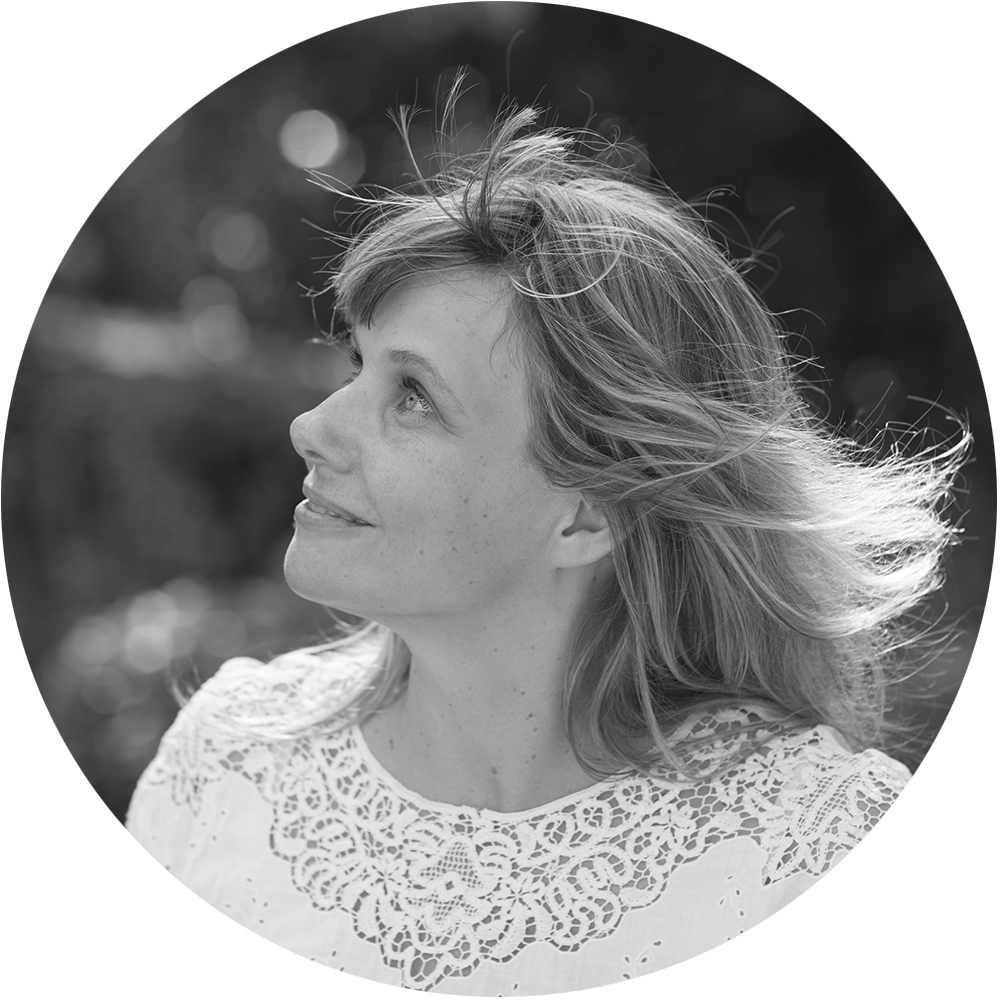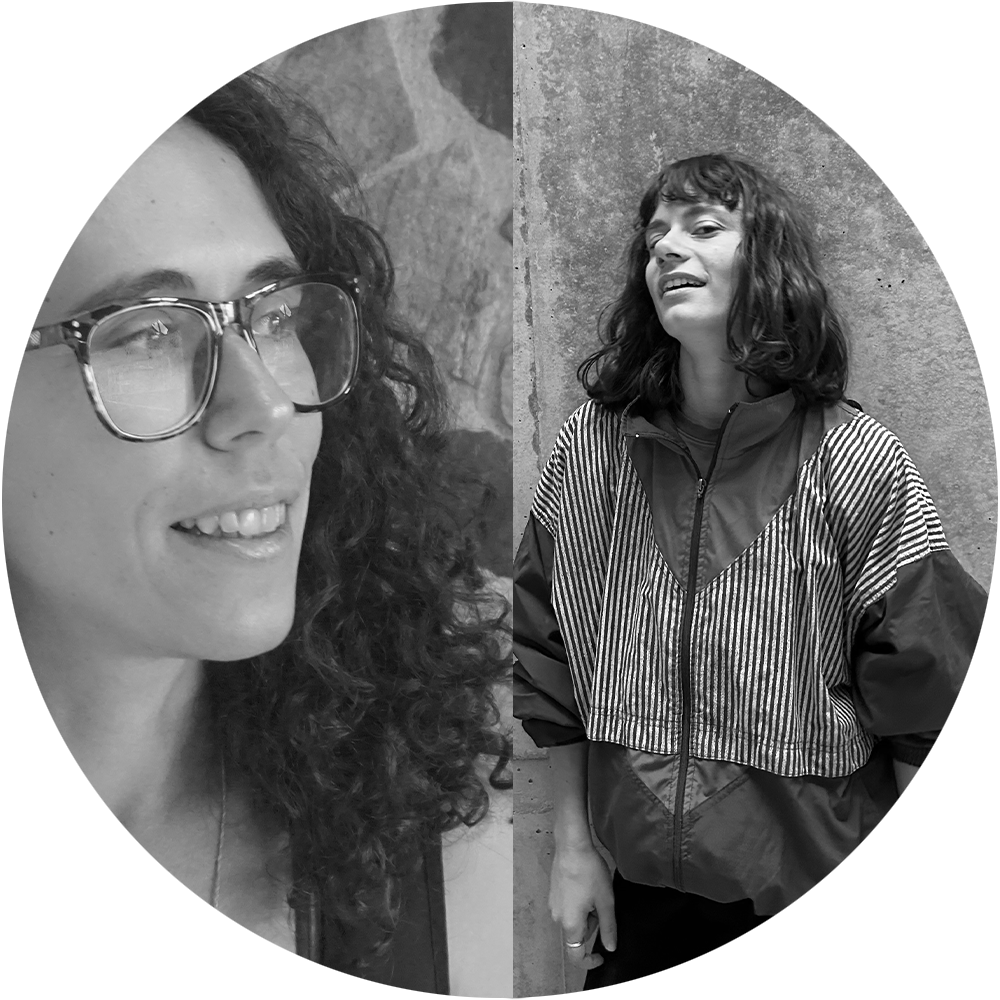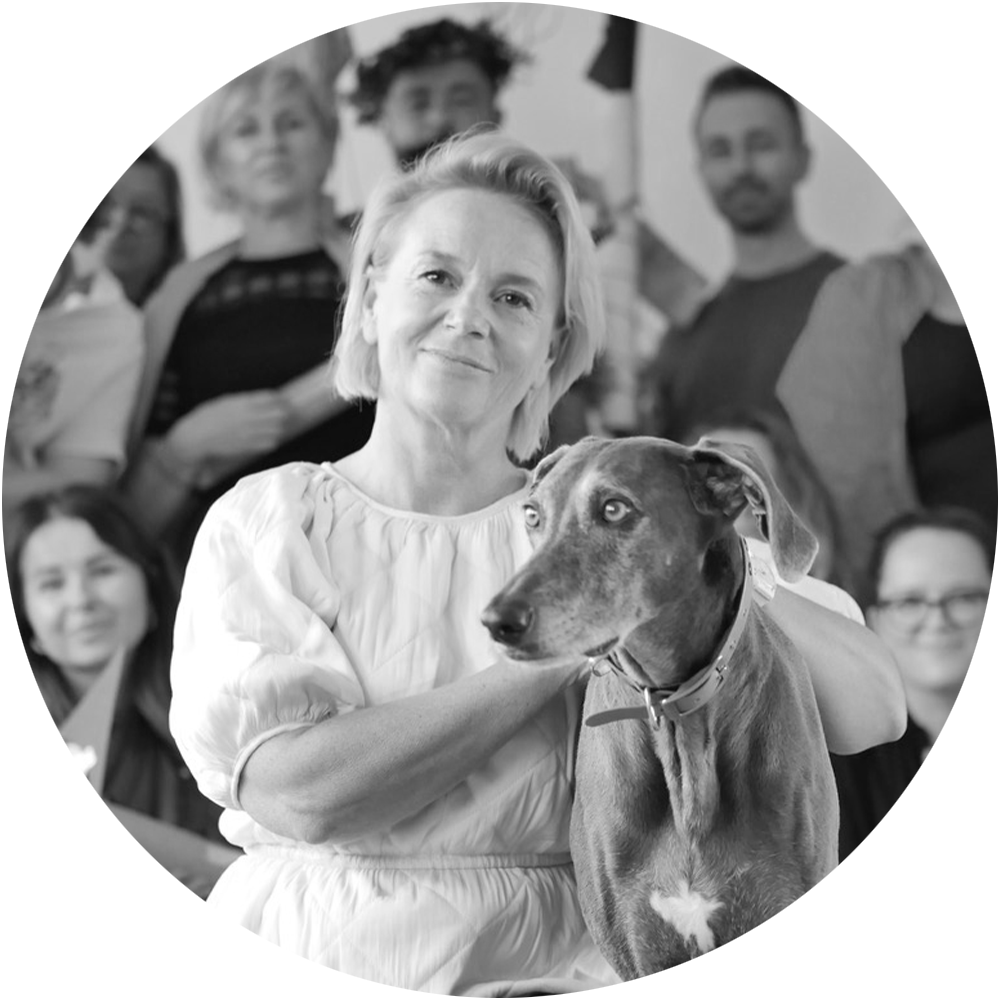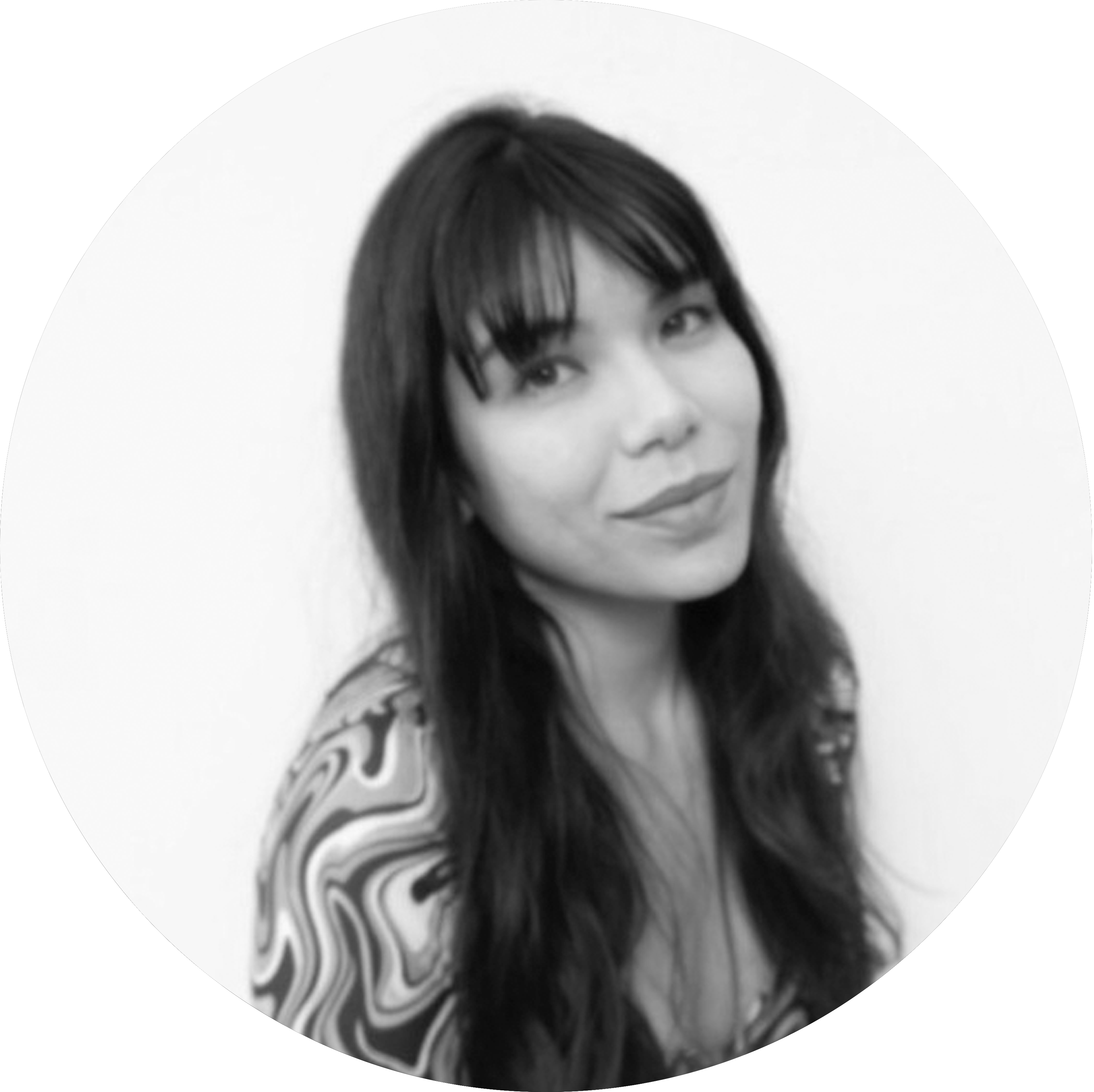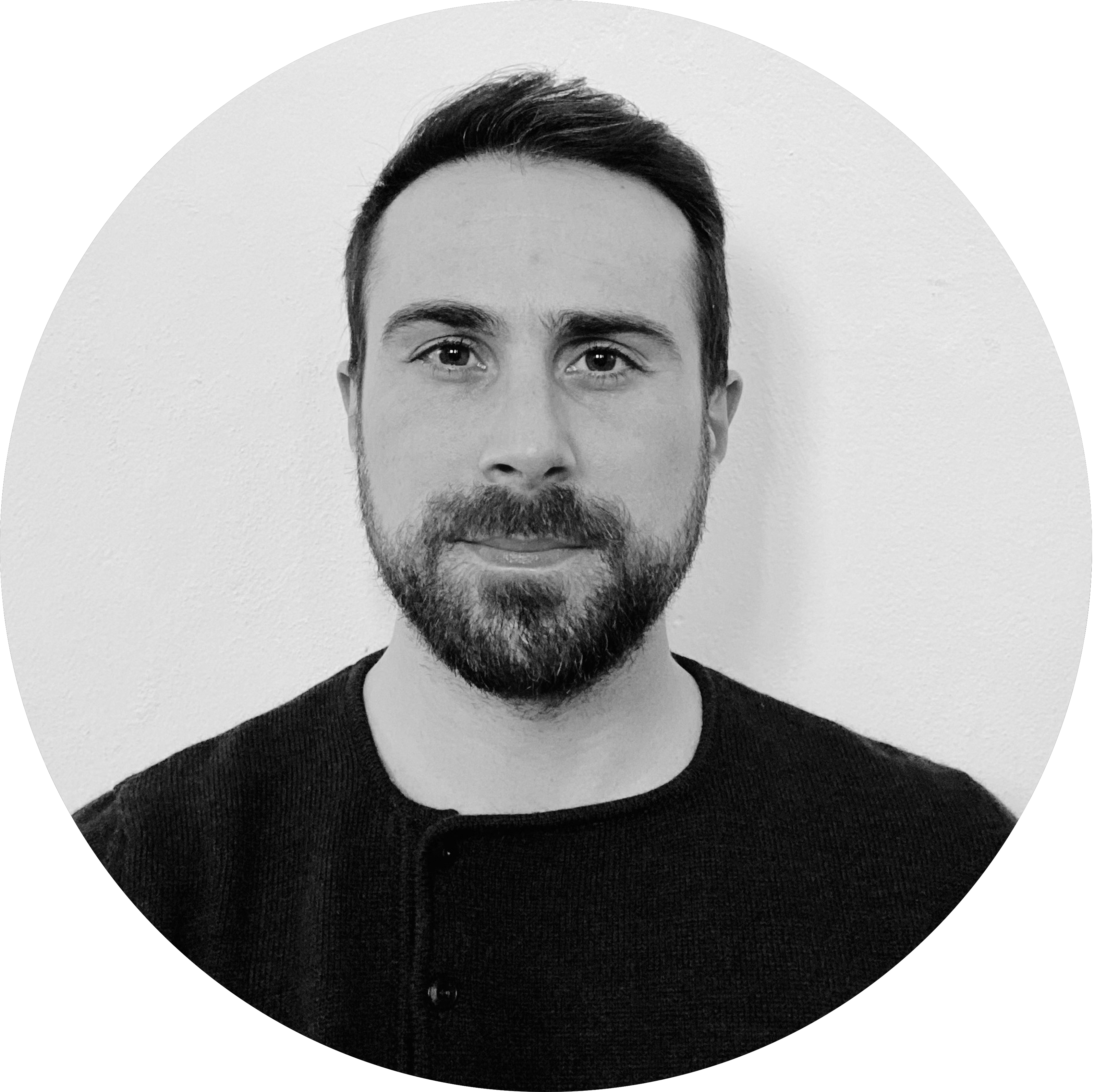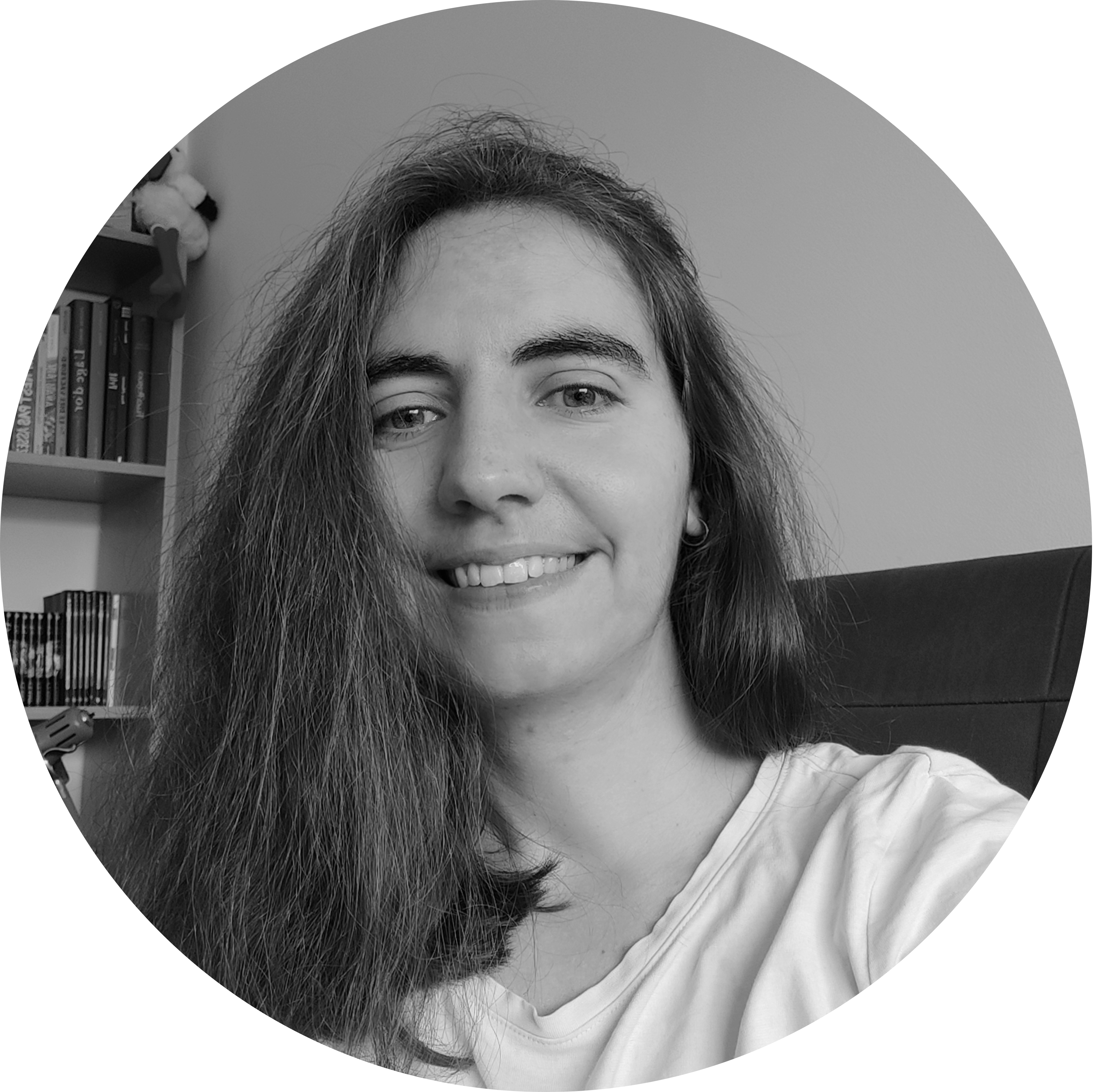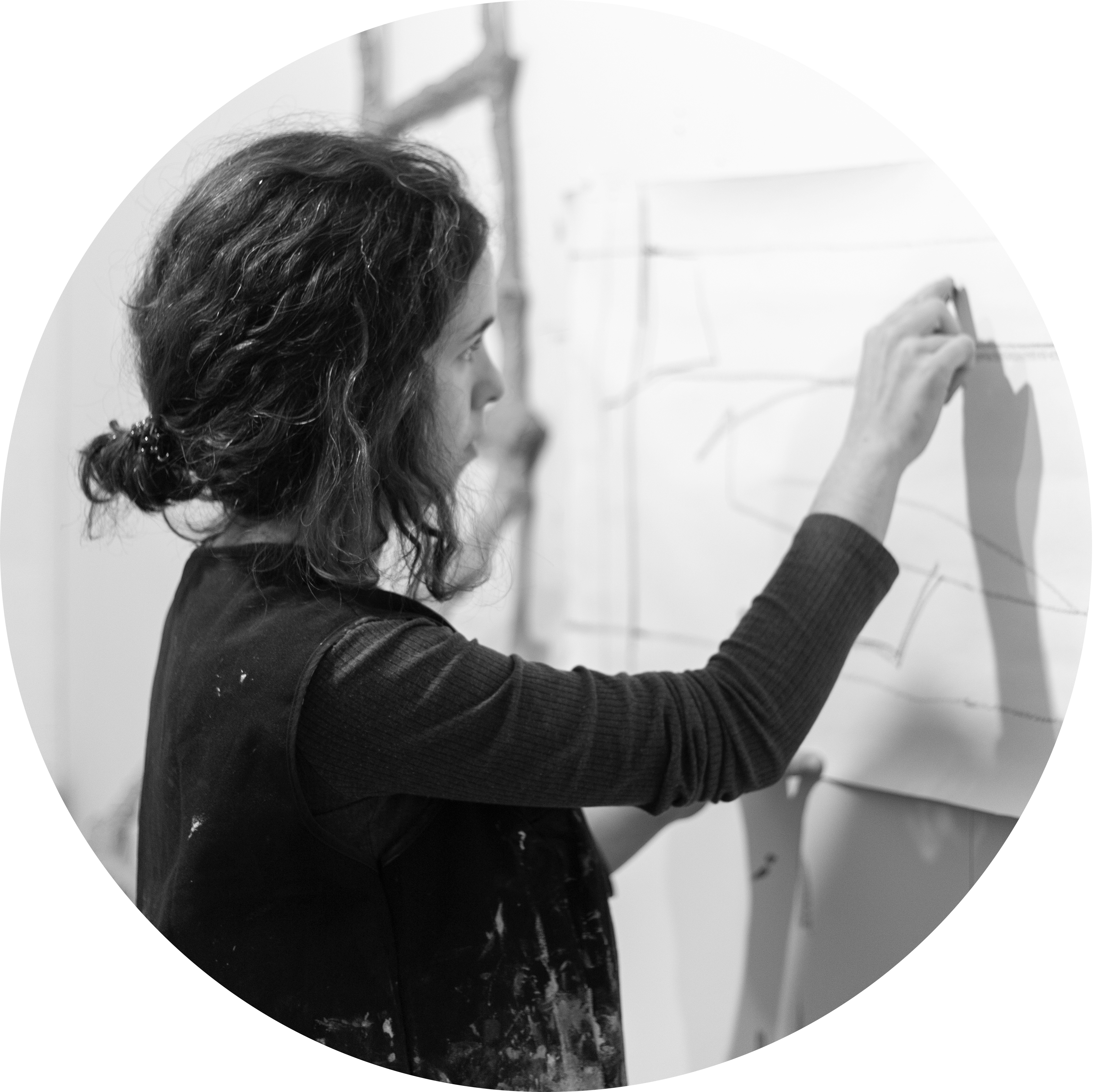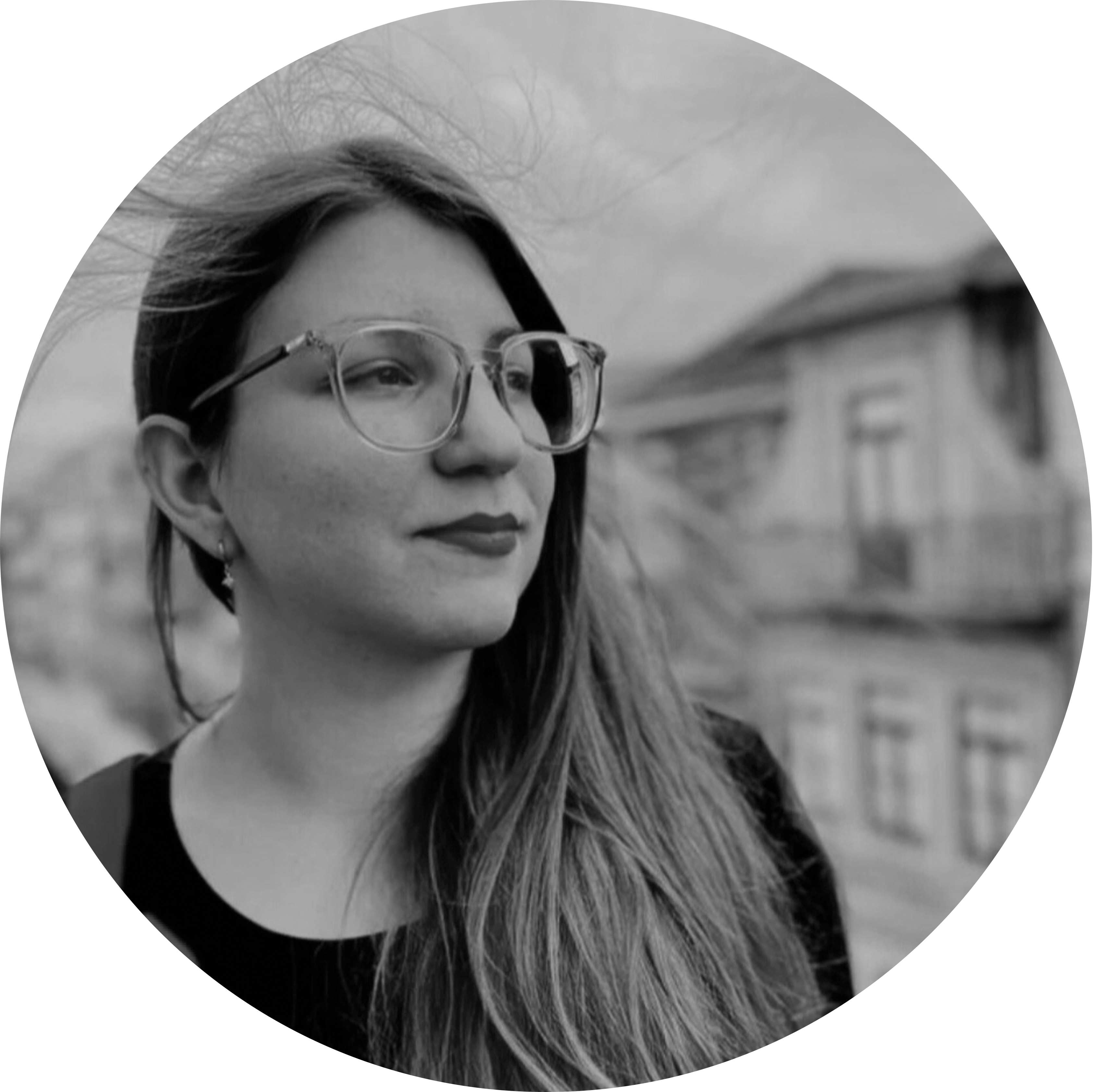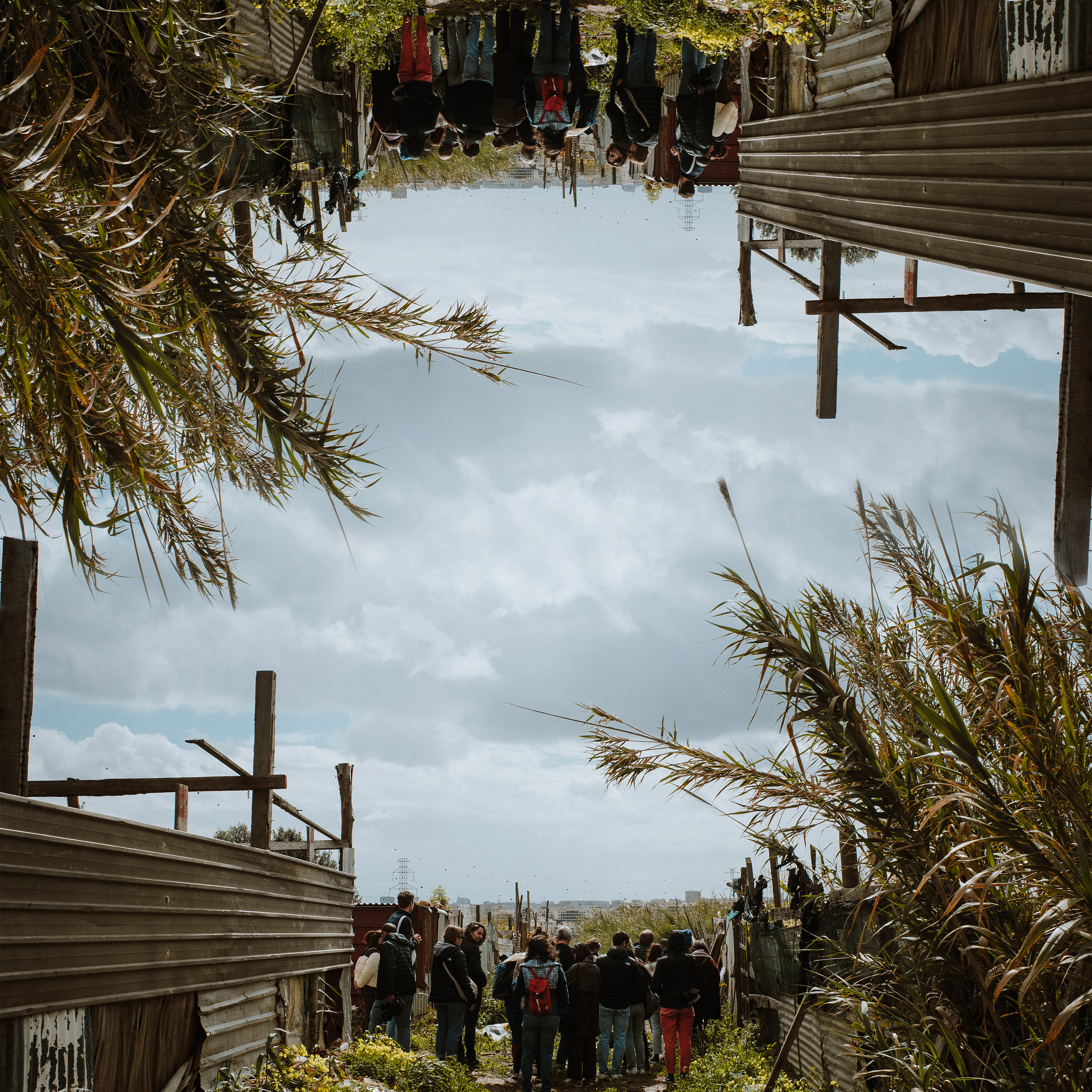
PLAY(THE)GROUND:
Informality as resistance
SUMMER RESIDENCIES IN TALUDE, QUINTA DA FONTE, BAIRRO DO ZAMBUJAL, TRAFARIA
<< FUND AN ARTIST >>
— project duration
June 2024 - ongoing
— curatorial team
Aino Garcia Vainio
Eugenia Bianchessi
Ioanna Kaloudioti
Joyce Ward
Kalle Hübel
Lígia Fernandes
Léa Heudes
Nicole Sánchez
Ricarda Oldekop
Sophia Niederkofler
— contacts
Aino Garcia Vainio
Lígia Fernandes
Joyce War
Sophia Niederkofler
— partner organization
AMRT - Associação para a Mudança e Representação Transcultural
COOPERACTIVA ALFRAGIDE
AFROLINK
ASSOCIAÇÃO DE MORADORES A PARTILHA
NOVA-School of Business and Economics
— support
DGARTES
ARTISTAS ANONIMOS
HORTAS LX
LISBON DRAWING CLUB
MURO ATELIER
"We speak that more Portuguese romani, where they introduce that “Ai, mãe...(Oh, mother...)”, but we also have what we call “galego”, which is more like Spanish. For example, if you're saying something and there's someone around and you don't want him to understand, you have another form of romani language, which we call ‘romanó’. There are words that if I say them in romani, you'll understand, ‘batatas’, we say the same, ‘ojos’ (eyes), you can understand, because it's more or less like Spanish. If I don't want you to understand, we have ‘sacais’, which has nothing to do with eyes, and it means eyes.
Even in the romani community, not everyone knows this kind of speech, ‘romanó’. There are words that even I don't know. Because nowadays it's not used as much with this generation, and the next one is leaving it even more.
The romani culture is gradually disappearing, it's not what it used to be. There are things that are good, but there are things that...well, anyway. It's changing a lot, more and more."
Even in the romani community, not everyone knows this kind of speech, ‘romanó’. There are words that even I don't know. Because nowadays it's not used as much with this generation, and the next one is leaving it even more.
The romani culture is gradually disappearing, it's not what it used to be. There are things that are good, but there are things that...well, anyway. It's changing a lot, more and more."
Manuel Monteiro dos Santos - Speaks about romani language (2021) A Música Cigana a Gostar Dela Própria
Adolfo Coelho - Os ciganos de Portugal - Um estudo Sobre o Calão (Dictionary)
Adolfo Coelho - Os ciganos de Portugal - Um estudo Sobre o Calão (Dictionary)
What is the form of the informal? Does resistance exclude or preserve, is it survival or emancipation? What is the knowledge of informality? How does it differ from the formal and why? What are the emotions of (in)formality, what places does it inhabit in our bodies? What is the power of the informal and what risks does it face? What worlds can we create from the encounter between the formal and the informal?
The PLAY(THE)GROUND program takes the form of a multidisciplinary residency aimed for people who are looking for space, focused time, and stimulating conversations that can help kick off or further develop a project that will engage with one of the different locations on the outskirts of Lisbon.
You can apply if you are an artist, curator, researcher, collective or anyone from a different background (you don't have to be from the art field) who is interested in working collaboratively, developing socially engaged practices, researching specific urban/cultural themes or developing experimental practices, with curatorial support and a public presentation. This residency offers a studio space in a specific urban environment, allowing participants the independence and freedom needed to develop a bottom-up project.
For the summer residency, we are looking for applicants who want to collaborate with the neighbourhood's younger population, although other situated practices are also welcome. We encourage applications from diverse cultural backgrounds: immigrants, people of African descent, Portuguese romani, and also from the territories, to respond to this call.
<< Read the FAQ here >>
The studios are available from 1st June 2024 to 15th September 2024. In the application process, candidates can indicate their time periods of occupation of the studios. In this way, we hope to meet the needs of potential residents as flexibly as possible.
Applicants can decide to work in different locations:
The PLAY(THE)GROUND program takes the form of a multidisciplinary residency aimed for people who are looking for space, focused time, and stimulating conversations that can help kick off or further develop a project that will engage with one of the different locations on the outskirts of Lisbon.
You can apply if you are an artist, curator, researcher, collective or anyone from a different background (you don't have to be from the art field) who is interested in working collaboratively, developing socially engaged practices, researching specific urban/cultural themes or developing experimental practices, with curatorial support and a public presentation. This residency offers a studio space in a specific urban environment, allowing participants the independence and freedom needed to develop a bottom-up project.
For the summer residency, we are looking for applicants who want to collaborate with the neighbourhood's younger population, although other situated practices are also welcome. We encourage applications from diverse cultural backgrounds: immigrants, people of African descent, Portuguese romani, and also from the territories, to respond to this call.
<< Read the FAQ here >>
The studios are available from 1st June 2024 to 15th September 2024. In the application process, candidates can indicate their time periods of occupation of the studios. In this way, we hope to meet the needs of potential residents as flexibly as possible.
Applicants can decide to work in different locations:
— DISCOVER PLAY(THE)GROUND
— FAQ
Fund an artist!
Fund an artist!
To give more people the possibility to join the residency with funding, we launched a campaign to support the artists!
Your donation would cover basic costs, art supplies and materials, accomodation, food, transportation and personal needs.
You can support through a donation to an individual artist Or to the collective pot that will distribute the money to the project, artists, exhibition, etc
* WARNING! In the field "your full name" write, next to your name , the name of the artist you want to fund, write "artists” to fund artists in general and “Play(the)ground" to fund the project. *
Your donation would cover basic costs, art supplies and materials, accomodation, food, transportation and personal needs.
You can support through a donation to an individual artist Or to the collective pot that will distribute the money to the project, artists, exhibition, etc
* WARNING! In the field "your full name" write, next to your name , the name of the artist you want to fund, write "artists” to fund artists in general and “Play(the)ground" to fund the project. *
Malgorzata Minchberg
I look for new associations for forms found in nature, not through primary rituals and artefacts, but through a community of experience.
The project
"Empathic mindfulness", as I call it, is the form from nature that I interfere with that triggers the need to be sensitive to it. I want to develop the “empathic mindfulness” in Quinta da Fonte during my residency and look for the traces of its culture.
Fund here
* In the field "your full name" write, next to your name, the name of the artist you want to fund.

Veronica Iacomi
I'd like to go through the stories of the very diverse communities living there, from the fishermen to the people in the 2° Torrão, and even the (to my knowledge) expanding circle of self-declared “expats”.
The project
Trafaria offers a great chance of exploring how social groups define themselves with relation to other groups and the surrounding environment, and of exposing the informality of self-perception vs the formality of common imagery. I envision a photographic series, correlated to a short documentary that can help present to a wider audience the different realities populating the territory, before they are swept away by real estate speculation, progressive legalisation of the settlements, and gentrification in all its forms.
Fund here
* In the field "your full name" write, next to your name, the name of the artist you want to fund.

Sarah Kilgallon
All neighborhoods are vulnerable not only to financial instability but also to urban construction and planning. This project’s aim is to produce a creative historical document. So even if the neighborhood’s suffer gentrification the people, the residents stories and spirit will remain.
The project
Together we will create a photo documentary, a construct of their individual stories and the heritage of their cultures within the neighborhoods. Through images and text, we will build a project that gives them a platform of expression of their reality, their hopes, and fears of the future.
Fund here
* In the field "your full name" write, next to your name, the name of the artist you want to fund.

Fiodor
As in wild life quiet places are always filled with life forms. I'd like to fill with playful art inconspicuous places of the bedroom community.
The project
Fedor plans to divide his residency in three parts. First, he wants to connect with the communities and share stories. Then he plans to convert the stories into sculptures, on of their artistic media. At the end he wishes to build within the neighbourhoods AR installations, for the communities to use.
Fund here
* In the field "your full name" write, next to your name, the name of the artist you want to fund.

Aleksandra Naydenova
Aleksandra’s project would take place in the self-built neighbourhood Bairro do Talude, inhabited by families from Cape Verde, where diversity and adjustment to the new context result in yet unfinished "new cultural elaborations," in a constant process of (de) and (re)construction.
The project
In her project, Aleksandra seeks to empower members of the community to share their stories and perspectives through visual artefacts derived from common elements of their environment, that convey and preserve their cultural identity in a digitally accessible format and truly correspond with their vision for capturing it on their own “terms and conditions”. By doing so, her goal is to provide them with the space and tools for collectively re(envisioning) the artefacts as encounters between the formal and the informal in their communities.
Fund here
* In the field "your full name" write, next to your name, the name of the artist you want to fund.

Diana Ferro
Diana is an antidisciplinary artist born in Italy and based in Groningen, The Netherlands. She spends a lot of time interacting with discarded words, books, materials, people, places and reflects on being (late).
The project
I have a fascination for time, spaces and processes of change and growth, ranging from the smallest scale of nature, to the one of the body, to landscapes, starting from the ground. I have a complete admiration for these powerful places as they are, and no need to add my part in the form of an authorial project, but rather learn from them. I want to learn how people go on during their single days in this ever changing scenario and how they, too, learn from it. I will be there as a curious observer, and then engage in activities with the web of connections that this observation will create, to take something with me in the end, as a seed to plant in other contexts: a way of living.
Fund here
* In the field "your full name" write, next to your name, the name of the artist you want to fund.

Trafaria
Trafaria consists of three territories with different characteristics: Trafaria (a former bathing area and industrial town), 2º Torrão (a self-built neighbourhood on the south bank of Tejo river, with a culturally diverse population) and Cova do Vapor (a self-built neighbourhood, made up mainly of Portuguese people linked to fishing).










Photos: Nicole Sánchez
Artists in Trafaria
Sara e Tralha wants to expand her vision of the "archaeology of the imagery". With this collection of multimediatic artworks she wishes to explore the poetic values of symbols in human life. During her residency she wants to focus on the objects of everyday life.
DIANA FERRO (IT)
![]()

Diana seeks to be a curious observer as she examines time and the processes of change and growth. She wants to learn about the processes and knowledge of the communities to create a web of connections based on it.
SARAH KILGALLON (US)
![]()

Sarah’s aim during her residency is to produce a creative historical document. It consists of a photo documentary, a construct of individual stories and heritage of the cultures within the neighborhoods.
Luciano will develop a series of objects-planets-research with the topic of informality as resistance.
He reflects on how do we take action to become present in a word in which always more objects lose their materiality in favour of a digital echo of them.
He reflects on how do we take action to become present in a word in which always more objects lose their materiality in favour of a digital echo of them.
Veronica will develop a photographic series, correlated to a short documentary that can help present to a wider audience the different realities populating the territory as they face the threat of being swept away by real estate speculation, progressive legalisation of the settlements, and gentrification in all its forms.
Vardit will develop her project “Supper in 2. Torrão” during her residency. She wants to film the everyday supper of different communities and units in the neighbourhood to create a reflection of their reality through this necessary ritual.
Luiza is interested in researching what is it, that stays after any given transitionary process. So she wants to bring her interest in the residency by connecting with people with a continuity to the space, to learn what does the neighbourhood represent for the individual.
Alice is interested in subjects related to villages and places that exist near the sea dealing with environmental issues and sustainability. During her residency she wants to look for traces of how people deal with the changes in the sea-level and protection of endangered areas.
Where is Trafaria?
Bairro do Zambujal
Bairro do Zambujal is one of Lisbon's largest social housing estates, located in Alfragide. It has a diverse population including Portuguese, romani communities and various African and Afro-descendant populations.
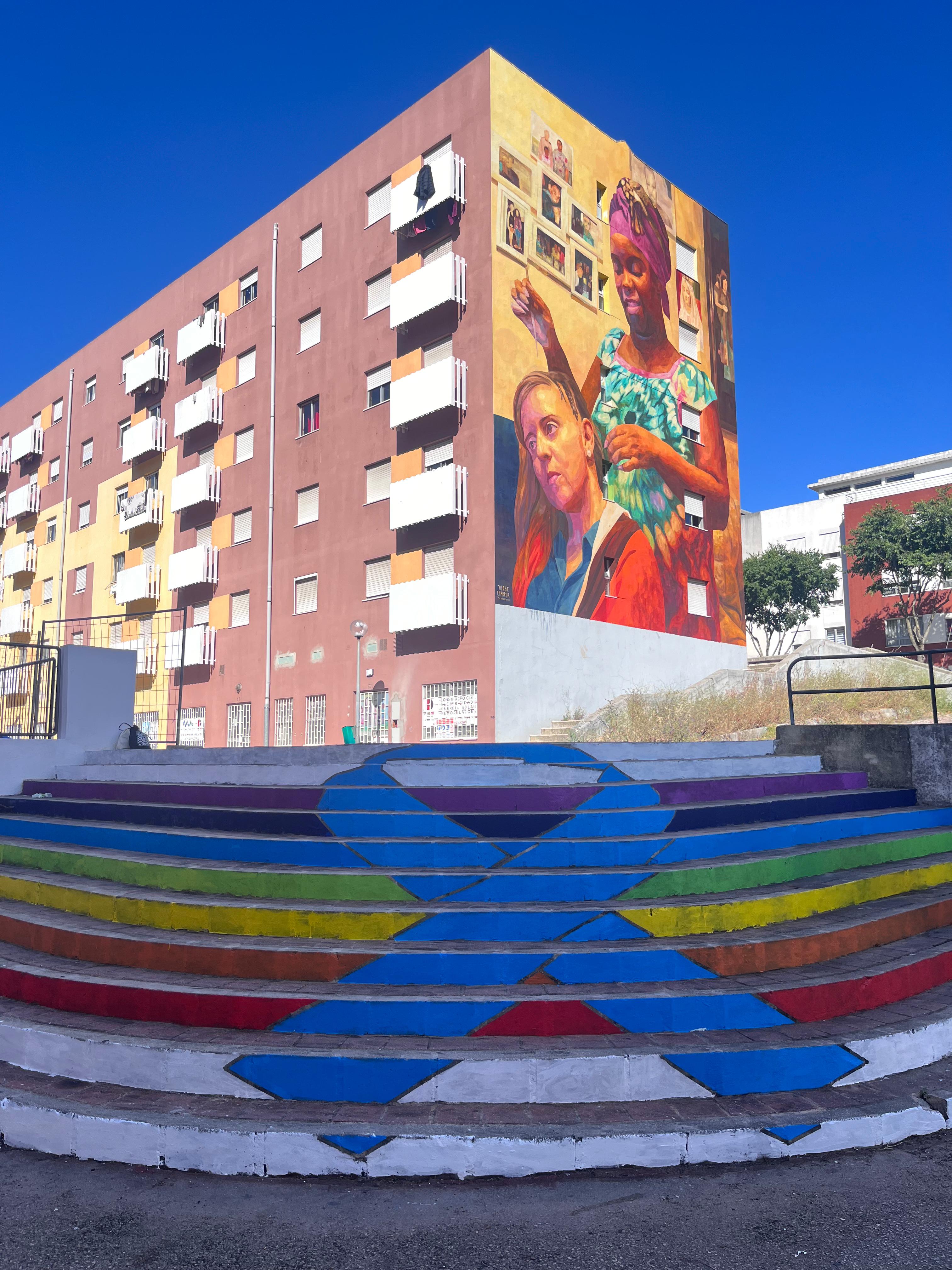
Photo: Eugenia Bianchessi
Artists in Bairro do Zambujal
During her residency Rita aims to create a sounding mosaic that captures the necessities of the local communities. In addition to that she wishes to create a neighbourhood library based on the interests and needs of the people.
Michele wants to explore, interact and document the environment. By doing so he wants to challenge different dynamics that come into play in designing space, exploring the forms of resistance in the practice of occupation and of making public privatized spaces.
Fiodor plans to divide his residency in three parts. First, he wants to connect with the communities and share stories. Then he plans to convert the stories into sculptures, on of their artistic media. At the end he wishes to build within the neighbourhoods AR installations, for the communities to use.
Sofia considers paintings as an expression of resistance and affection, and therefore she will make portraits of the residents of Zambujal, after conducting conversations and interviews, in order to get to know them.
Zala aims to invite viewers to embark on a journey of introspection and discovery by researching the dynamic interplay between figurative and nonrepresentational art. Additionally she is keen to explore themes of identity, memory, and transformation in order to search for emotional responses triggered by contrasts.
Where is Bairro do Zambujal?
Talude
Talude is a self-built neighborhood mostly composed of families originally from Cape Verde. It has very few businesses, a restaurant, a bar, a “distillery”, and many farms created by the inhabitants. This is an impermanent territory, which is planned to be demolished in the future for urban re-planning.






Photos: Nicole Sánchez
Artists in Talude
Ana is a young artist from Talude. During her residency she wants to involve her community to fulfil her objective of making art accessible for everyone.
MAx will realise the project "BorderSlides" in Talude. It is an installation that can be activated by the community that will work as a border of memory, a metaphor between the immigrant context.
Manuela will develop her "CORPO-CASA" project, reflecting how the body of an immigrant becomes their own individual home. She will then realise an installation, telling the stories of the communities.
Tomás Serrão (PT)
![]()
website
Tomás wants to explore the topic of dreams and its ramifications. He aims at understanding how dreams affect the perception of reality and the way they influence identity.
website
Aleksandra seeks to empower members of the community to share their stories through visual artefacts. Her goal is to provide them with the space and tools for collectively re(envisioning) the artefacts as encounters between the formal and the informal in their communities.
Rodrigo (Olinda/BRA) will carry out the research-intervention "PAI DERIVA", with the aim of mapping informal oral and bodily repertoires that co-emerge from the interactions between father and child as they drift through the neighborhood. With the child as the guide, the aim is to find clues to the re-enchantment of everyday life and the emancipation of disciplinary territories, one of which is symbolically fatherhood.
Lourosa Costa (ST)
![]()
website
Lourosa is an artist who seeks to acquire new experiences and knowledge and to show that through art we can influence what is around us and that with it we can sensitize people and expose them to different realities.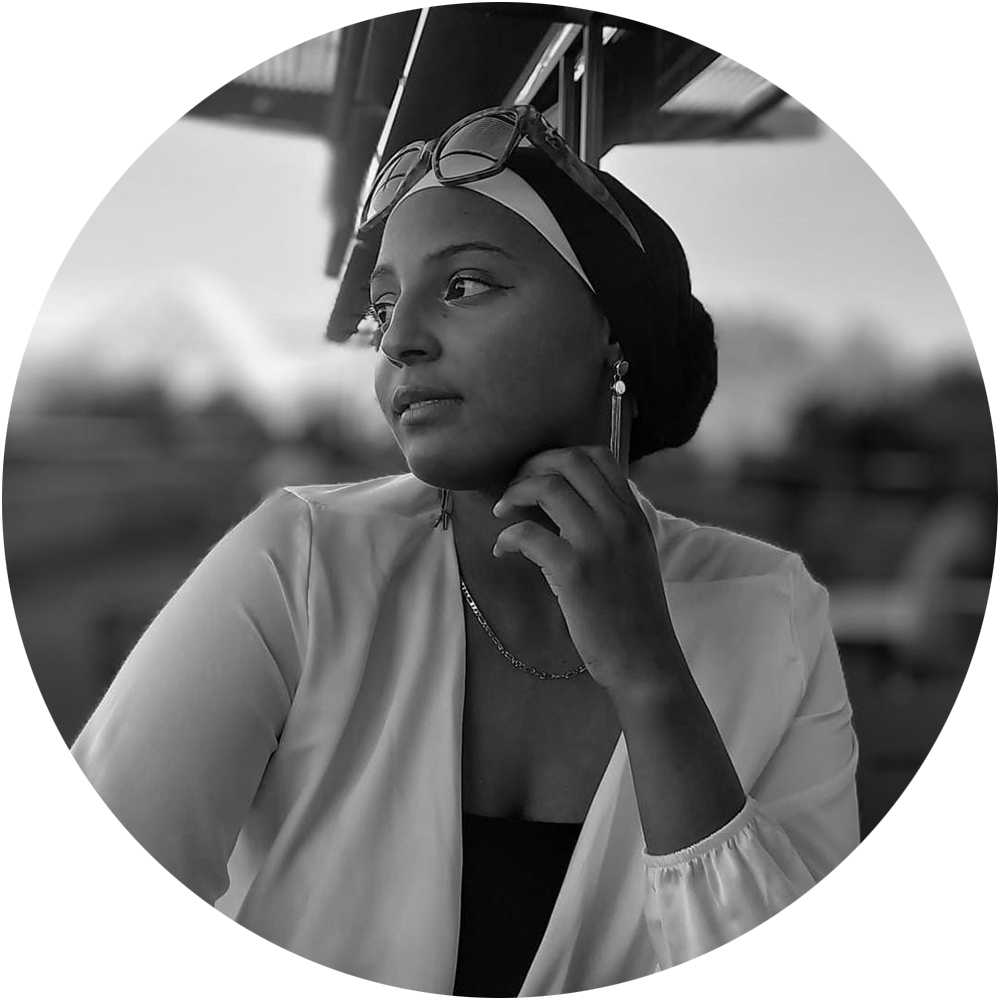
website
Where is Talude?
Quinta da fonte
Quinta da Fonte is a social neighborhood aggregating people who were moved from other neighborhoods in the city, from different origins, such as Portuguese, romani communities, and several African and afro-descendant populations.




Photos: Nicole Sánchez
Artists in Quinta da Fonte
Riikka wants to empower the children and youth of Quinta da Fonte to become artists themselves without even noticing. She will develop a storytelling project in which she proposes to them the storytelling as a medium to express themselves, which stories will then grow into other forms of art.
The Urban Pulse Collective wants explore the potential of the group as a dynamic and the ever-changing structure that develops through conflicting forces and informal settings. It will use improvisation, instant composition and work in partners practices coupled with narrative and community consensus processes in order to address informality as antifragility.
Jessica aims to create a community theatre project by offering a safe zone in Quinta da Fonte for people to share and learn about their opinions and thoughts on socio-political issues. At the end of her residency she hopes that these stories will be shown to a wider audience in form of a theatrical scene, to bring awareness and visibility to the communities.
Małgorzata wants to develop the “empathic mindfulness”, as she calls it, which is the form of nature that she interferes with, that triggers the need to be sensitive to it. In Quinta da Fonte she intends to look for the traces of its culture and its "empathetic mindfulness".
Suzy Willekens (NL)
![]()
website
Suzy aims to create an installation by involving the local communities. Through a collaborative dialogue between different cultures she wants to develop a collective art piece for Quinta da Fonte.
website
Where is Quinta da Fonte?
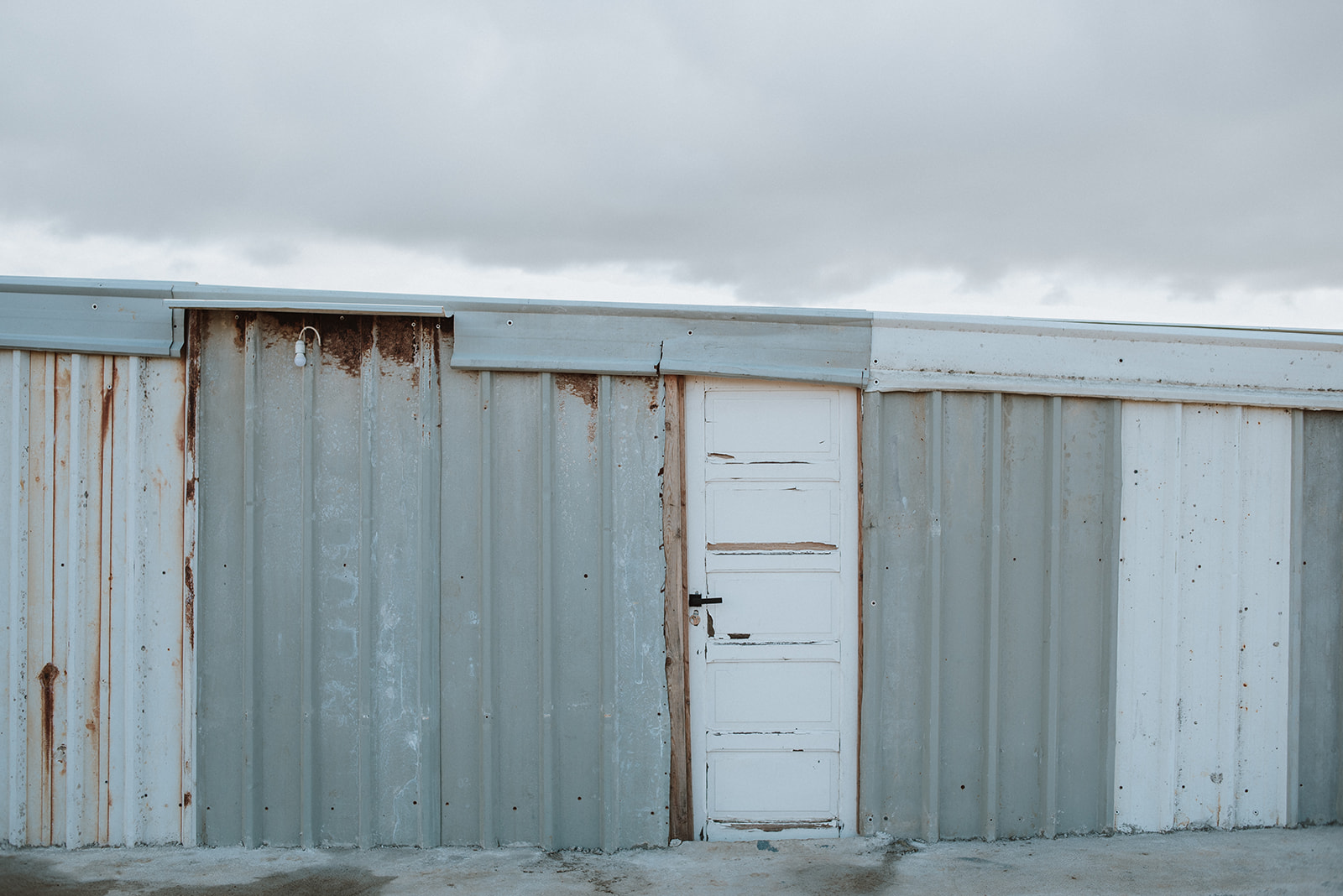
PLAY(THE)GROUND:
Places of Impermanence
Summer Residency/Studios in Talude and Quinta da Fonte.
— project duration
July 2023 - September 2023
— curatorial team
Lígia Fernandes
Karina Zelonka
Nicole Sánchez
Ricarda Oldekop
— contact persons
Lígia Fernandes
Ricarda Oldekop
— partner organization
AMRT - Associação para a Mudança
e Representação Transcultural
— support
NOVA-School of Business and Economics
July 2023 - September 2023
— curatorial team
Lígia Fernandes
Karina Zelonka
Nicole Sánchez
Ricarda Oldekop
— contact persons
Lígia Fernandes
Ricarda Oldekop
— partner organization
AMRT - Associação para a Mudança
e Representação Transcultural
— support
NOVA-School of Business and Economics
On the top of the hill there is no more juniper
It has dried up
(...)
To go to Lisbon he sold his land
For half the price
There, working in the rain, in the wind
In the cold
At CUF, Lisnave or J. Pimenta
Exploited
Cheap labor no matter how hard he works
He’s nothing more than a servant
Cheap labor, shack without light
Eating on the run
Even more cheated by the white brother
Exploited
But the day I return to my land
Many colors of chilli
Will give me water
And strength in my arms
Consciousness that I've worked
The power of my land is in me
With juniper on the hill
My children on the ground
My boat in the harbor
Our land, oh, our land.
It has dried up
(...)
To go to Lisbon he sold his land
For half the price
There, working in the rain, in the wind
In the cold
At CUF, Lisnave or J. Pimenta
Exploited
Cheap labor no matter how hard he works
He’s nothing more than a servant
Cheap labor, shack without light
Eating on the run
Even more cheated by the white brother
Exploited
But the day I return to my land
Many colors of chilli
Will give me water
And strength in my arms
Consciousness that I've worked
The power of my land is in me
With juniper on the hill
My children on the ground
My boat in the harbor
Our land, oh, our land.
“Altu Kutelu”/”Top of the hill” Renato Cardoso (Cape Verdean song)
Which forces lead us move away from our land? To what extent can we do something about them? Is leaving an act of courage? What do we learn along the way, what do we create, and what do we bring with us? How faris this journey? Which land do we call ours? Where is the home to return to? When does impermanence become permanence?
This summer we invite artists, curators, collectives, and researchers to spend some time in places of impermanence. These places tell stories: some were created by those who arrived, like mirrors from the land of departure, some are imposed, shaped by urban progress, forcing transitions along the way. Some welcome people from a single origin, others aggregate people from many origins. They act as places of reflection about our own stories, about what we feel in our bodies, the tiredness, the longing and the hope. For the next generations, they are also places of re-imagination, for which you are invited to enter.
Mais uno+1 invites you to apply for two residencies this summer. The program is for people who are looking for space, focused time, and stimulating conversations that can help to kick off or further develop a project that will engage with two different locations on the outskirts of Lisbon. Applicants can decide to work in one or two locations:
This summer we invite artists, curators, collectives, and researchers to spend some time in places of impermanence. These places tell stories: some were created by those who arrived, like mirrors from the land of departure, some are imposed, shaped by urban progress, forcing transitions along the way. Some welcome people from a single origin, others aggregate people from many origins. They act as places of reflection about our own stories, about what we feel in our bodies, the tiredness, the longing and the hope. For the next generations, they are also places of re-imagination, for which you are invited to enter.
Mais uno+1 invites you to apply for two residencies this summer. The program is for people who are looking for space, focused time, and stimulating conversations that can help to kick off or further develop a project that will engage with two different locations on the outskirts of Lisbon. Applicants can decide to work in one or two locations:
- Place one: Quinta da Fonte - This is a social neighborhood aggregating people who were moved from other neighborhoods in the city, from different origins, such as Portuguese, romani communities, and several African and afro-descendant populations.




Photography: Nicole Sánchez
- Place two: Bairro do Talude - This is a self-built neighborhood mostly composed of families originally from Cape Verde. It has very few businesses, a restaurant, a bar, a “distillery”, and many farms created by the inhabitants. This is an impermanent territory, which is planned to be demolished in the future for urban re-planning.





Photography: Nicole Sánchez
— resident artists
Alberto Maria Gatti (IT)
Alberto Maria Gatti (1992) is a composer, sound designer and computer music designer. He attended electronic music courses at the Conservatory of Florence and the Master AReMus at the Conservatory of Rome concerning the practice of artistic research in music. Afterwards he followed workshops and seminars of composition and sound direction. As composer, he participated in several festivals and events of contemporary music including: Ircam, Tempo Reale, Museo del Novecento, Fabbrica Europa, Inner Spaces, Palazzo Vecchio, Salone del Mobile di Milano, SIMC, Pontino Festival, Italian Institute of Culture in Brussels, Teatro del Giglio, Teatro Cantiere Florida, Spam/Aldes, Museo Pecci, Chaufuonna Festival and others.
Alberto Maria Gatti (1992) is a composer, sound designer and computer music designer. He attended electronic music courses at the Conservatory of Florence and the Master AReMus at the Conservatory of Rome concerning the practice of artistic research in music. Afterwards he followed workshops and seminars of composition and sound direction. As composer, he participated in several festivals and events of contemporary music including: Ircam, Tempo Reale, Museo del Novecento, Fabbrica Europa, Inner Spaces, Palazzo Vecchio, Salone del Mobile di Milano, SIMC, Pontino Festival, Italian Institute of Culture in Brussels, Teatro del Giglio, Teatro Cantiere Florida, Spam/Aldes, Museo Pecci, Chaufuonna Festival and others.
Elena Aya Bundurakis (GR/JPN)
Elena Aya Bundurakis is a Greek-Japanese photographer born in Crete island. She uses her camera as a tactile device, rather than a technological tool. Her work focuses on how it feels to be a living organism in this era that lies between the primal, the modern & the post natural-world. She uses herself as a specimen of the human experience. Images collide and divide according to the situation. Drawings, video and haikus are incorporated. Bundurakis currently works between Crete and Corfu, where she co-founded REON (a space for clay). She graduated summa cum laude from the Royal Academy of Fine Arts Antwerp with an MA in Visual Arts & Photography, and holds a BA in Graphic Arts Technology from the Technological Educational Institute of Athens. Her work has been nominated for several prestigious photography awards and has been exhibited in various locations like Metronom gallery (IT), Fotomuseum Antwerp (BE), Marres Maastricht (NL), Fotomuseum Winterthur (CH), Noorderlicht Festival (NL), the Athens Photo Festival (GR) a.o.
Elena Aya Bundurakis is a Greek-Japanese photographer born in Crete island. She uses her camera as a tactile device, rather than a technological tool. Her work focuses on how it feels to be a living organism in this era that lies between the primal, the modern & the post natural-world. She uses herself as a specimen of the human experience. Images collide and divide according to the situation. Drawings, video and haikus are incorporated. Bundurakis currently works between Crete and Corfu, where she co-founded REON (a space for clay). She graduated summa cum laude from the Royal Academy of Fine Arts Antwerp with an MA in Visual Arts & Photography, and holds a BA in Graphic Arts Technology from the Technological Educational Institute of Athens. Her work has been nominated for several prestigious photography awards and has been exhibited in various locations like Metronom gallery (IT), Fotomuseum Antwerp (BE), Marres Maastricht (NL), Fotomuseum Winterthur (CH), Noorderlicht Festival (NL), the Athens Photo Festival (GR) a.o.
Emma Gonsales Moro (RU)
My name is Emma Gonsales Moro, I am 22 years old and I’m from Moscow. I graduated from Moscow Film College, faculty of art and animation. I moved to Lisbon and started life from scratch shortly after the war started. There are several themes that attract my interest more than others when it comes to drawing. Tiny details mean the world to me, I can start drawing the whole city landscape only because of some small but very attractive lantern on the background. Windows, mirrors, screens, holes, reflections, everything that can look like a portal to somewhere inside of the drawing magnetise me. Variety of textures and shapes. Focused faces, strange body positions, hands. Usually I draw from life but I don’t have a goal to repeat the reality as it is, it always turns out to be more colourful and simple, but I like it. I would say that the closest style to my art is primitivism. It’s an aesthetic idealisation and simplification of reality. In fact, sometimes people say to me that my works look a little bit childish but I accept it as a compliment because It’s partly my intention: to remember and express how the world felt to me when I was just a child, without knowledge about perspective, composition rules and all these laws of universe, when my perception was pure. Of course it doesn’t mean that I don’t use this knowledge in my drawings, I’m trying to unite my drawing skills and this childish way to see the world and make something beautiful out of it.
My name is Emma Gonsales Moro, I am 22 years old and I’m from Moscow. I graduated from Moscow Film College, faculty of art and animation. I moved to Lisbon and started life from scratch shortly after the war started. There are several themes that attract my interest more than others when it comes to drawing. Tiny details mean the world to me, I can start drawing the whole city landscape only because of some small but very attractive lantern on the background. Windows, mirrors, screens, holes, reflections, everything that can look like a portal to somewhere inside of the drawing magnetise me. Variety of textures and shapes. Focused faces, strange body positions, hands. Usually I draw from life but I don’t have a goal to repeat the reality as it is, it always turns out to be more colourful and simple, but I like it. I would say that the closest style to my art is primitivism. It’s an aesthetic idealisation and simplification of reality. In fact, sometimes people say to me that my works look a little bit childish but I accept it as a compliment because It’s partly my intention: to remember and express how the world felt to me when I was just a child, without knowledge about perspective, composition rules and all these laws of universe, when my perception was pure. Of course it doesn’t mean that I don’t use this knowledge in my drawings, I’m trying to unite my drawing skills and this childish way to see the world and make something beautiful out of it.
Lorenzo Ballerini (IT)
Composer, sound and new media artist, mainly focused in live electronics and multimedia installations. Born in Florence in 1990. Graduated in Music and New Technologies at the Conservatory Luigi Cherubini in Florence and in second-level master’s degree AReMus (Artistich Research in Music) at the Conservatory Santa Cecilia in Rome. His aesthetics focus in the exploration of the the political and social meaning of human beings related to the artwork and in today’s society. He has participated as composer and performer in festivals such as Berlin Biennale, Bright Festival, Diffrazioni Festival, Fabbrica Europa, MEFF, SMC2018, SMC2019, Tempo Reale Festival. He has collaborated with artists including Alvise Vidolin, Christine Meisner, Michele Marasco, Nicola Sani, Paolo Parisi, Roberto Fabbriciani, Tiziano Manca.
Composer, sound and new media artist, mainly focused in live electronics and multimedia installations. Born in Florence in 1990. Graduated in Music and New Technologies at the Conservatory Luigi Cherubini in Florence and in second-level master’s degree AReMus (Artistich Research in Music) at the Conservatory Santa Cecilia in Rome. His aesthetics focus in the exploration of the the political and social meaning of human beings related to the artwork and in today’s society. He has participated as composer and performer in festivals such as Berlin Biennale, Bright Festival, Diffrazioni Festival, Fabbrica Europa, MEFF, SMC2018, SMC2019, Tempo Reale Festival. He has collaborated with artists including Alvise Vidolin, Christine Meisner, Michele Marasco, Nicola Sani, Paolo Parisi, Roberto Fabbriciani, Tiziano Manca.
Marianne Delaforge (FR)
I am a self-taught visual artist and comic book author. I studied cultural journalism in Belgium and turned to the fine arts when I took a course in Budapest in 2014 but didn't continue down that path afterwards. It was only in 2019 that I returned to drawing, inspired above all by nature and the animality that interconnects with humanity. Since then, I participated in several collective exhibitions, such as 12x12 and "Small formats" and in various comic competitions such as the 24 hours of comics in Lisbon or the annual contests of Odemira or Kus editions. I also started to be musically active in 2018 when I joined the female choir Fio á meada, a project that continues to perform in Lisbon and elsewhere in Portugal to this day. I co-founded the Lisbon Drawing Club in 2021 and participated in the development of Queer Art Lab sessions, which promote the Trans and non-binary body in art. I like collective and groups in art and the way it feed my own practice, thanks to all those projects, art became a very social adventure for me.
I am a self-taught visual artist and comic book author. I studied cultural journalism in Belgium and turned to the fine arts when I took a course in Budapest in 2014 but didn't continue down that path afterwards. It was only in 2019 that I returned to drawing, inspired above all by nature and the animality that interconnects with humanity. Since then, I participated in several collective exhibitions, such as 12x12 and "Small formats" and in various comic competitions such as the 24 hours of comics in Lisbon or the annual contests of Odemira or Kus editions. I also started to be musically active in 2018 when I joined the female choir Fio á meada, a project that continues to perform in Lisbon and elsewhere in Portugal to this day. I co-founded the Lisbon Drawing Club in 2021 and participated in the development of Queer Art Lab sessions, which promote the Trans and non-binary body in art. I like collective and groups in art and the way it feed my own practice, thanks to all those projects, art became a very social adventure for me.
Marie Jiménez (DOM)
Marie works with their immediate context. Their work is defined by the intersection of painting, cinema, sound and installation. In this interdisciplinary context, and with interest in initiating a dialogue urging social change, they work with themes related to identity and its perception outside of the norm. It is in this manner, sharing their personal experience, that the intimate becomes a tool for the political. Marie is currently enrolled in the Graduate program of film development in ESTC in Lisbon. They have participated in numerous collective art shows in NYC where they obtained their bachelor's degree in Parsons The New School. Also, they have participated in collective shows in museums and other cultural institutions in their home country, the Dominican Republic, and other institutions around America and Europe.
Marie works with their immediate context. Their work is defined by the intersection of painting, cinema, sound and installation. In this interdisciplinary context, and with interest in initiating a dialogue urging social change, they work with themes related to identity and its perception outside of the norm. It is in this manner, sharing their personal experience, that the intimate becomes a tool for the political. Marie is currently enrolled in the Graduate program of film development in ESTC in Lisbon. They have participated in numerous collective art shows in NYC where they obtained their bachelor's degree in Parsons The New School. Also, they have participated in collective shows in museums and other cultural institutions in their home country, the Dominican Republic, and other institutions around America and Europe.
Muro Atelier (PT): Joana Tomas / Vincent Rault
Collective created by architects, Muro Atelier endeavors to challenge the concept of ephemerality through a participatory practice centered around material reuse and revitalization of unoccupied or public spaces.Through their research and installations, this initiative aims to reshape our perception of the city's dynamics, moving towards a more circular and sustainable system, while empowering urban participants to understand and harness the potential resources available to them. The term "Muro," meaning "Wall" in Portuguese, encapsulates architecture's fundamental essence, exploring notions of materiality, boundary, and scale. The wall embodies numerous metaphors in the collective imagination: an impassable barrier, yet also a gateway to freedom. Rooted in its physical, cultural, and historical context, the installations envisioned by the collective narrate and unveil the spaces they inhabit, placing visitors at the heart of their experiences.
Collective created by architects, Muro Atelier endeavors to challenge the concept of ephemerality through a participatory practice centered around material reuse and revitalization of unoccupied or public spaces.Through their research and installations, this initiative aims to reshape our perception of the city's dynamics, moving towards a more circular and sustainable system, while empowering urban participants to understand and harness the potential resources available to them. The term "Muro," meaning "Wall" in Portuguese, encapsulates architecture's fundamental essence, exploring notions of materiality, boundary, and scale. The wall embodies numerous metaphors in the collective imagination: an impassable barrier, yet also a gateway to freedom. Rooted in its physical, cultural, and historical context, the installations envisioned by the collective narrate and unveil the spaces they inhabit, placing visitors at the heart of their experiences.
Rita Leitão (PT)
Rita Leitão was born in Lisbon in 1998. She graduated from the Faculty of Fine Arts, University of Lisbon in Painting marking her journey through Bilbao. Since then, she participated in several group exhibitions, highlighting “Elogio da Matéria”, SNBA Lisbon (January 2019); “Family Dinner”, Ceramics Museum, Sacavém (November 2020) and “Coletivo Casa Rosário”, Cascais (May 2021). In August 2021, she opened her first solo exhibition, “Bem-Vindo a Casa”, at CAT, in Tavira, and in October 2021 she was a resident artist at the Bordalo Pinheiro Museum. Rita is currently establishing her practice at the Beliche collective atelier, in Xabregas. Trainer, market enthusiast, illustrator, performer and plastic artist, Rita develops her practice in a deep relationship between Art and Life.
Rita Leitão was born in Lisbon in 1998. She graduated from the Faculty of Fine Arts, University of Lisbon in Painting marking her journey through Bilbao. Since then, she participated in several group exhibitions, highlighting “Elogio da Matéria”, SNBA Lisbon (January 2019); “Family Dinner”, Ceramics Museum, Sacavém (November 2020) and “Coletivo Casa Rosário”, Cascais (May 2021). In August 2021, she opened her first solo exhibition, “Bem-Vindo a Casa”, at CAT, in Tavira, and in October 2021 she was a resident artist at the Bordalo Pinheiro Museum. Rita is currently establishing her practice at the Beliche collective atelier, in Xabregas. Trainer, market enthusiast, illustrator, performer and plastic artist, Rita develops her practice in a deep relationship between Art and Life.
Zala Pori (SI)
Zala Pori is a visual artist from Slovenia, living in Cascais, Lisbon. After she finished her bachelors at the Academy of Fine Arts and Design Ljubljana in the painting department, she decided to take a leap abroad with the same department in her Masters. In 2016/17 she spent 2 semesters at the Faculdade de Belas Artes in Porto, Portugal. After completing her degree back at home she decided to take a break from the arts and embarked on collecting different life experiences, performing different professional roles. In 2021, she returned to Portugal, and her desire to return into the art field got rekindled. In her search for finding freedom in expression, she is exploring the play between figurative and nonrepresentational elements throughout the creative process. Contrasts, finding the balance between the complementary colors, the light and the dark, organic vs geometric, are also kept in mind during the process. The abstraction of artistic language creates images that open the door to imagination and fantasy.
Zala Pori is a visual artist from Slovenia, living in Cascais, Lisbon. After she finished her bachelors at the Academy of Fine Arts and Design Ljubljana in the painting department, she decided to take a leap abroad with the same department in her Masters. In 2016/17 she spent 2 semesters at the Faculdade de Belas Artes in Porto, Portugal. After completing her degree back at home she decided to take a break from the arts and embarked on collecting different life experiences, performing different professional roles. In 2021, she returned to Portugal, and her desire to return into the art field got rekindled. In her search for finding freedom in expression, she is exploring the play between figurative and nonrepresentational elements throughout the creative process. Contrasts, finding the balance between the complementary colors, the light and the dark, organic vs geometric, are also kept in mind during the process. The abstraction of artistic language creates images that open the door to imagination and fantasy.
— discover PLAY(THE)GROUND
— photo galleries
























Photos: Nicole Sánchez









































Photos: Nicole Sánchez
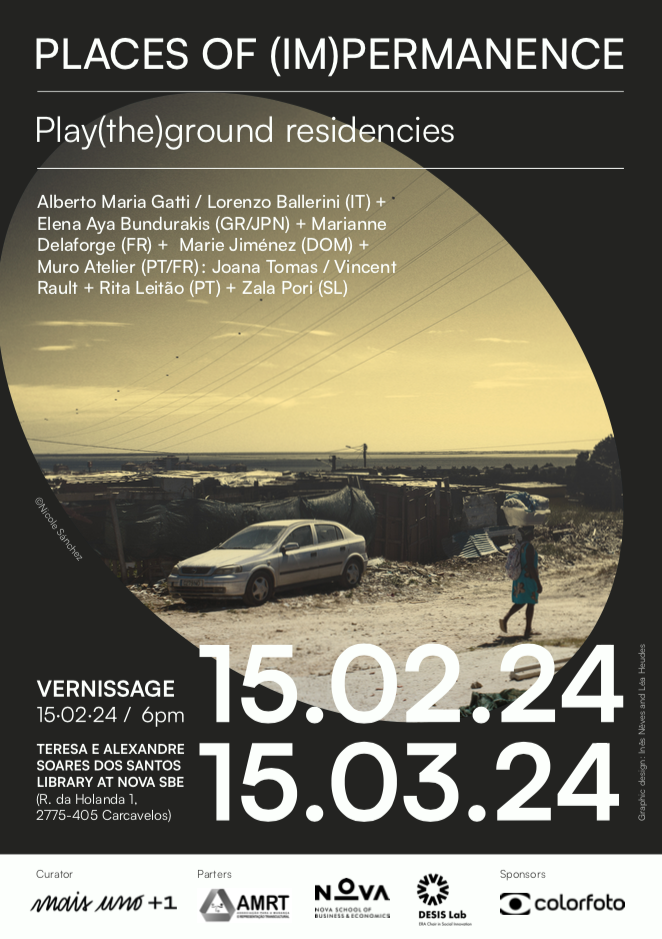
PLAY(THE)GROUND:
Places of Impermanence
Summer Residency/Studios in Talude and Quinta da Fonte.
EXHIBITION
— project duration
FEBRUARY 15th - MARCH 15th 2024
TERESA AND ALEXANDRE SOARES DOS SANTOS LIBRARY
NOVA SBE
R. da Holanda 1 2775-405 Carcavelos
Monday 9:00 am - 8:00 pm
Tuesday 9:00 am - 8:00 pm
Wednesday 9:00 am - 8:00 pm
Thursday 9:00 am - 8:00 pm
Friday 9:00 am - 8:00 pm
Saturday Closed
Sunday Closed
— curatorial team
Lígia Fernandes ± main curator
Ricarda Oldekop ± communication ± exhibition curator
Karīna Zelonka ± communication
Nicole Campos Sánchez ± exhibition curator ± photographer
Inês Nêves ± design
Xristina Sagioglou ± exhibition curator ± exhibition assistance
Léa Heudes ± graphic design exhibition
Aurelie d’Incau ± build-up assistance
Alexia Alexandropoulou ± editor
— exhibiting artists
Alberto Maria Gatti / Lorenzo Ballerini (IT)
Elena Aya Bundurakis (GR/JPN)
Marianne Delaforge (FR)
Marie Jiménez (DOM)
Muro Atelier (PT)
Joana Tomas (PT/FR) Vincent Rault (FR)
Rita Leitão (PT)
Zala Pori (SI)
— partnerships : sponsors : thank you
AMRT - Associação para a Mudança
e Representação Transcultural
NOVA-School of Business and Economics NOVA Community
NOVA library
Desis Lab
Alberto Maria Gatti
Lorenzo Ballerini
Elena Aya Bunduraki Emma Gonsales Moro
Marianne Delaforge
Marie Jiménez
Muro Atelier: Joana Tomas & Vincent Rault
Rita Leitão
Zala Pori
COLORFOTO
Anabela Carvalho
Felix Schlüter-Oldekop
— special thank you
Talude and Quinta da Fonte Residents
Marianne Delaforge and Laurent Mendy
Rolando Borges and Aurio Sebastião (AMRT)
— PLAY(THE)GROUND FRIENDS
Sofia Leite
Glória Meireles
Amélia Novo
Helena Barahona Simões
Cristina Vilar
Glória Brito
Bárbara Miguel
Glória Brito
Jorge Almeida
Simão Brito
and other anonymous friends that kindly donated for this project.
FEBRUARY 15th - MARCH 15th 2024
TERESA AND ALEXANDRE SOARES DOS SANTOS LIBRARY
NOVA SBE
R. da Holanda 1 2775-405 Carcavelos
Monday 9:00 am - 8:00 pm
Tuesday 9:00 am - 8:00 pm
Wednesday 9:00 am - 8:00 pm
Thursday 9:00 am - 8:00 pm
Friday 9:00 am - 8:00 pm
Saturday Closed
Sunday Closed
— curatorial team
Lígia Fernandes ± main curator
Ricarda Oldekop ± communication ± exhibition curator
Karīna Zelonka ± communication
Nicole Campos Sánchez ± exhibition curator ± photographer
Inês Nêves ± design
Xristina Sagioglou ± exhibition curator ± exhibition assistance
Léa Heudes ± graphic design exhibition
Aurelie d’Incau ± build-up assistance
Alexia Alexandropoulou ± editor
— exhibiting artists
Alberto Maria Gatti / Lorenzo Ballerini (IT)
Elena Aya Bundurakis (GR/JPN)
Marianne Delaforge (FR)
Marie Jiménez (DOM)
Muro Atelier (PT)
Joana Tomas (PT/FR) Vincent Rault (FR)
Rita Leitão (PT)
Zala Pori (SI)
— partnerships : sponsors : thank you
AMRT - Associação para a Mudança
e Representação Transcultural
NOVA-School of Business and Economics NOVA Community
NOVA library
Desis Lab
Alberto Maria Gatti
Lorenzo Ballerini
Elena Aya Bunduraki Emma Gonsales Moro
Marianne Delaforge
Marie Jiménez
Muro Atelier: Joana Tomas & Vincent Rault
Rita Leitão
Zala Pori
COLORFOTO
Anabela Carvalho
Felix Schlüter-Oldekop
— special thank you
Talude and Quinta da Fonte Residents
Marianne Delaforge and Laurent Mendy
Rolando Borges and Aurio Sebastião (AMRT)
— PLAY(THE)GROUND FRIENDS
Sofia Leite
Glória Meireles
Amélia Novo
Helena Barahona Simões
Cristina Vilar
Glória Brito
Bárbara Miguel
Glória Brito
Jorge Almeida
Simão Brito
and other anonymous friends that kindly donated for this project.



Which forces lead us to move away from our land?
To what extent can we do something about them?
Is leaving an act of courage?
What do we learn along the way, what do we create, and what do we bring with us?
How far is this journey?
Which land do we call ours?
Where is the home to return to?
When does impermanence become permanence?
SYNOPSIS
This summer, the collective Mais Uno +1 invited a group of artists, creatives and researchers to spend some time in places of (im)permanence. These places tell stories: some were created by those who arrived, like mirrors from the land of departure, some were imposed, shaped by urban progress, forcing transitions along the way. Some welcome people from a single origin, others aggregate people from many origins. They act as places of reflection about our own stories, about what we feel in our bodies, the tiredness, the longing and the hope. For the next generations, they are also places of re-imagination, for which you are invited to enter.Place one: QUINTA DA FONTE - A social neighbourhood built to re-locate people who lived in the area which later became EXPO ‘98 / Parque das Nações, as well as other areas of the city which needed to be relocated (Portela, Prior Velho, Quinta da Serra).. Therefore, we find, in the same place, people of different origins, such as Portuguese, Romani portuguese, and several African and afro-descendant populations.
Place two: TALUDE - An informal, self-built neighbourhood, built by the african immigrants on a private land, mostly composed of Cape Verdean families and descendants. It has very few businesses, a restaurant, a bar, a “distillery”, and many farms created by the inhabitants. This is an impermanent territory, in continuous risk of demolition for urban re-planning. Located a few minutes from Parque Das nações, its hillside, overlooks the urban city development, in high contrast with its informality and connection to nature.
Place two: TALUDE - An informal, self-built neighbourhood, built by the african immigrants on a private land, mostly composed of Cape Verdean families and descendants. It has very few businesses, a restaurant, a bar, a “distillery”, and many farms created by the inhabitants. This is an impermanent territory, in continuous risk of demolition for urban re-planning. Located a few minutes from Parque Das nações, its hillside, overlooks the urban city development, in high contrast with its informality and connection to nature.
The program was aimed at people looking for space, focused time, and stimulating conversations that could foster collaboration with local communities and inspire the development of innovative, bottom-up projects. This first PLAY(THE)GROUND residency edition (pilot) took place between July and September 2023, and counted with the participation of 10 residents from fields such as sound art, painting, illustration, architecture, filmmaking and sculpture. With the support of NOVA-SBE, we now present the residency results, creating new connections between the university, the different communities involved and the public.


Photos by Marianne Delaforge

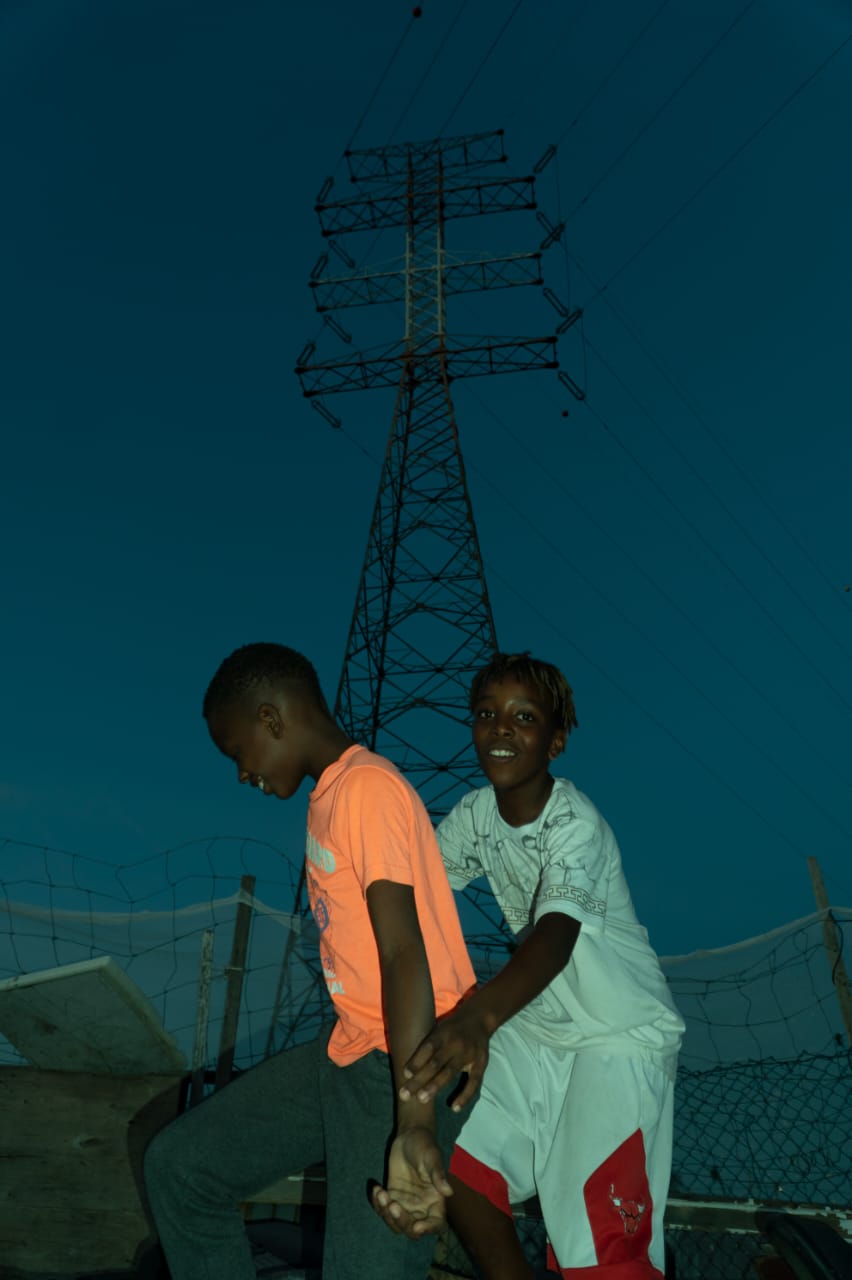
Photos by Elena Aya Bundurakis

Photos by: Alberto Maria Gatti / Lorenzo Ballerini
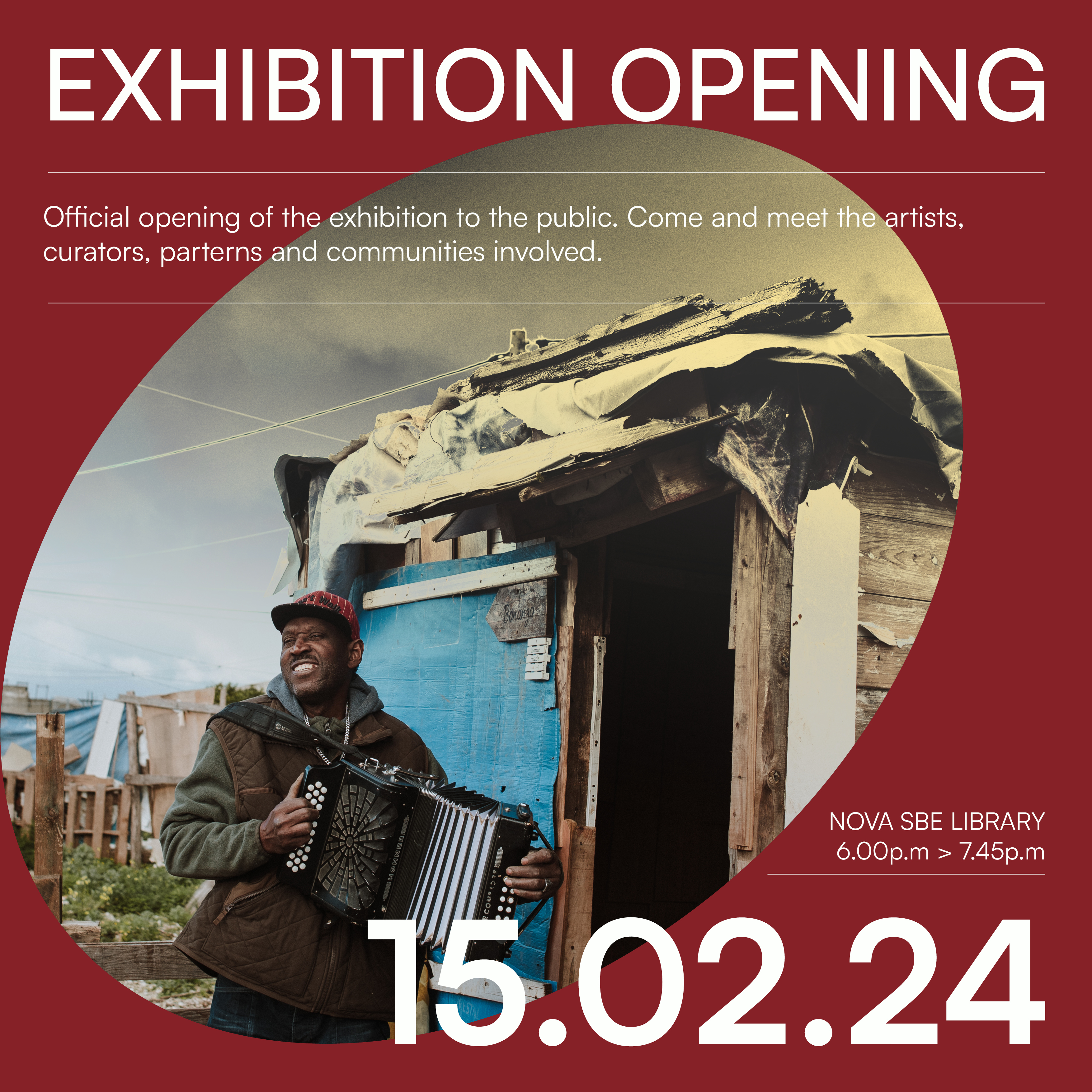


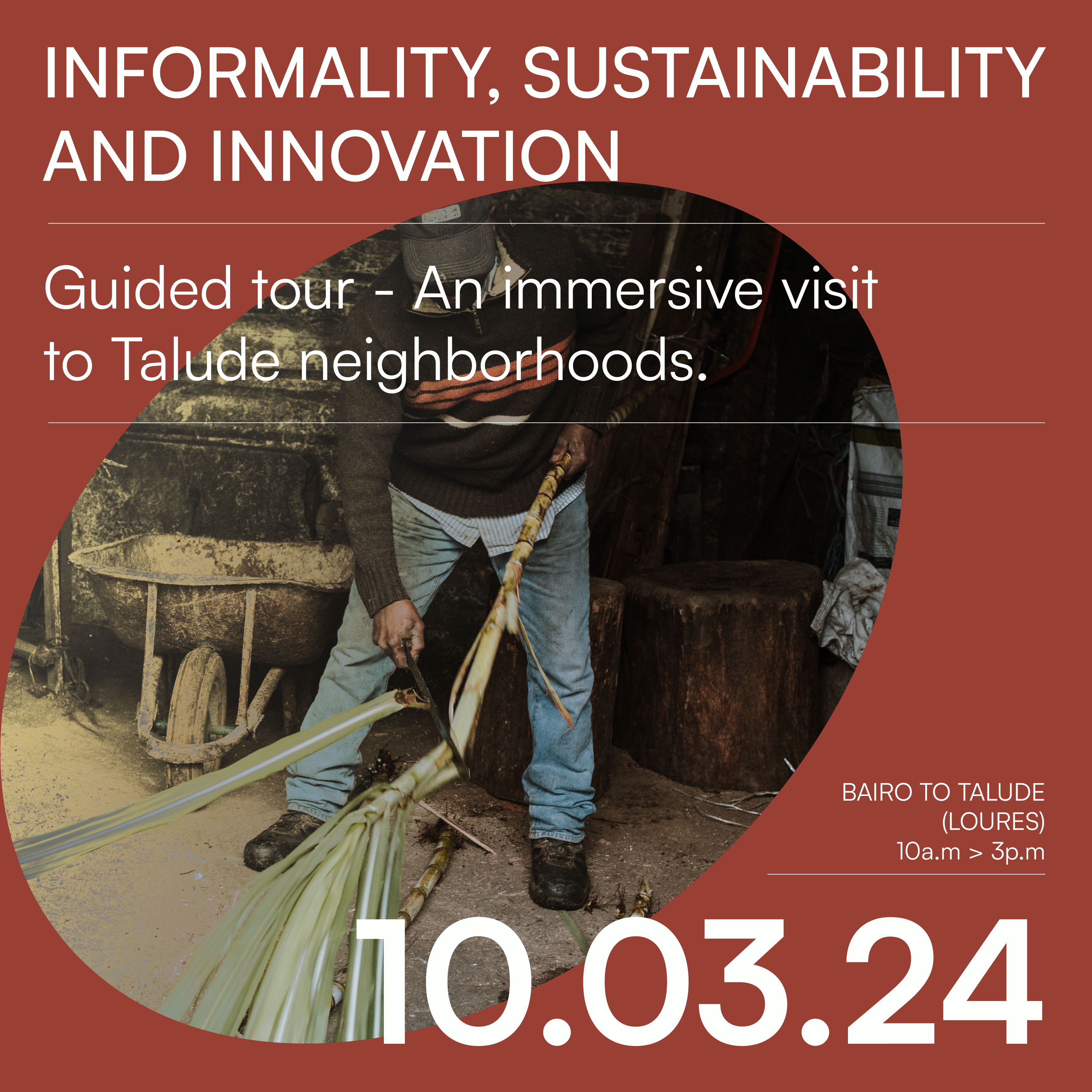


Photo Gallery
![]()
![]()
![]()
![]()
![]()
![]()
![]()
![]()
![]()



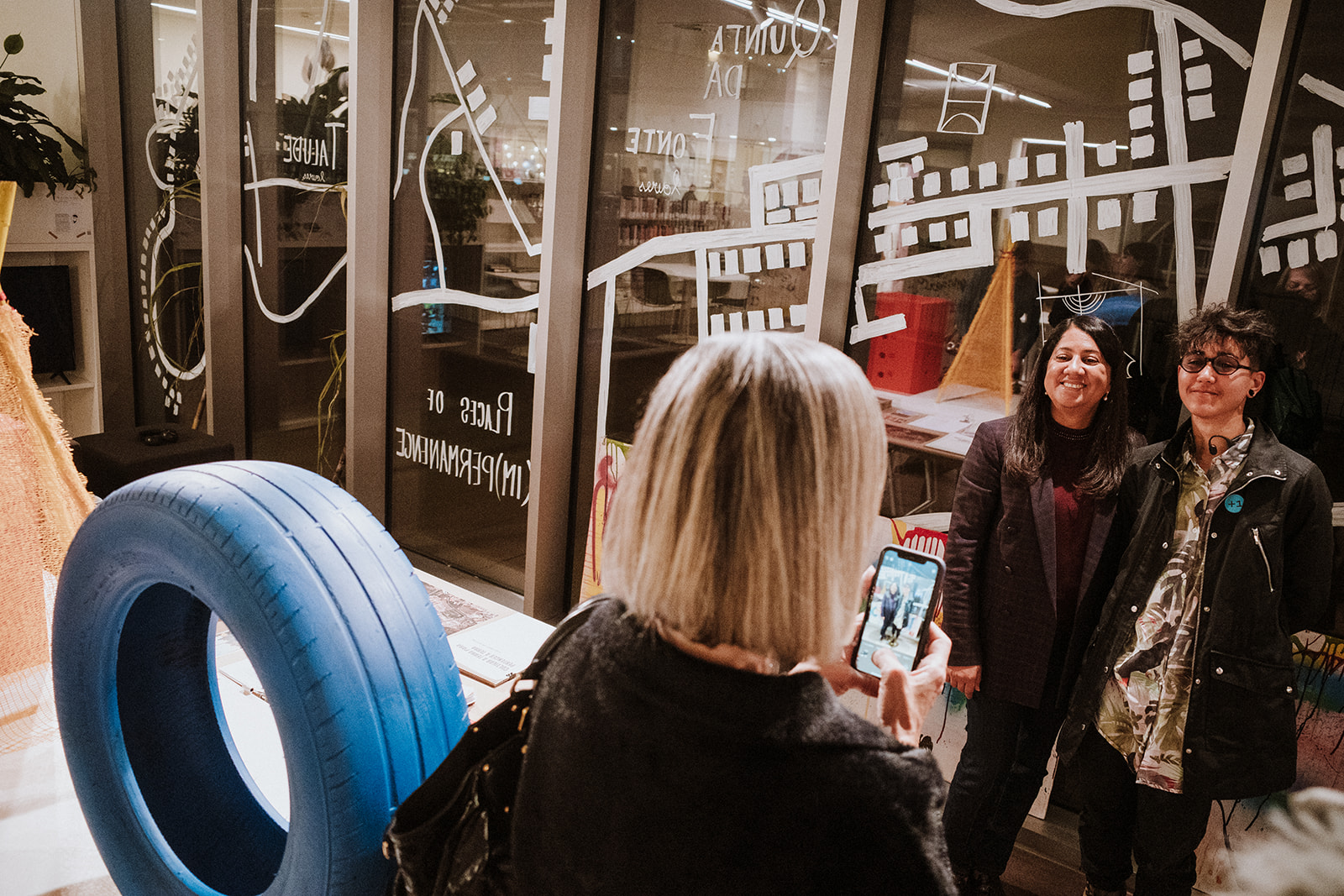





Photos: Nicole Sánchez
INTERVIEWS TO THE ARTISTS

